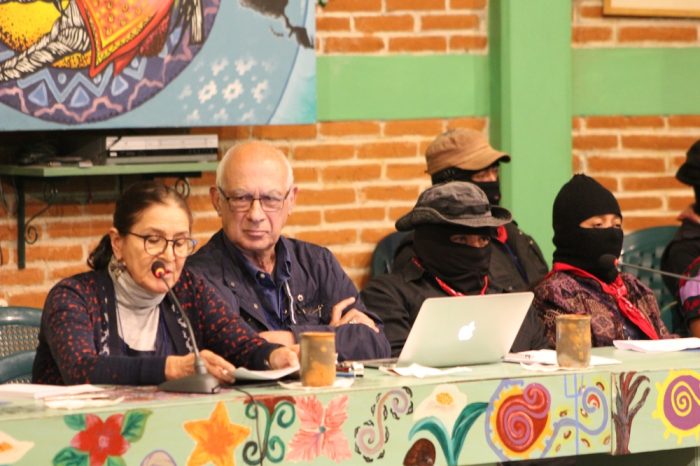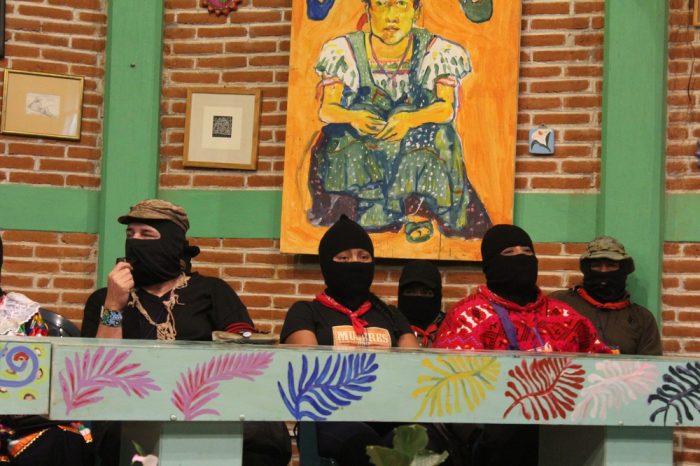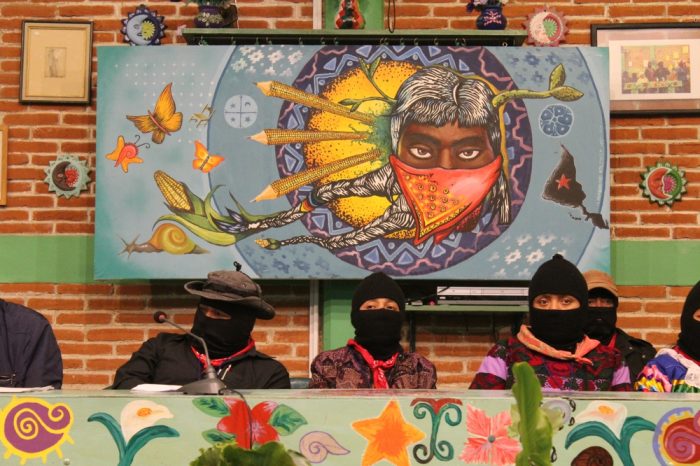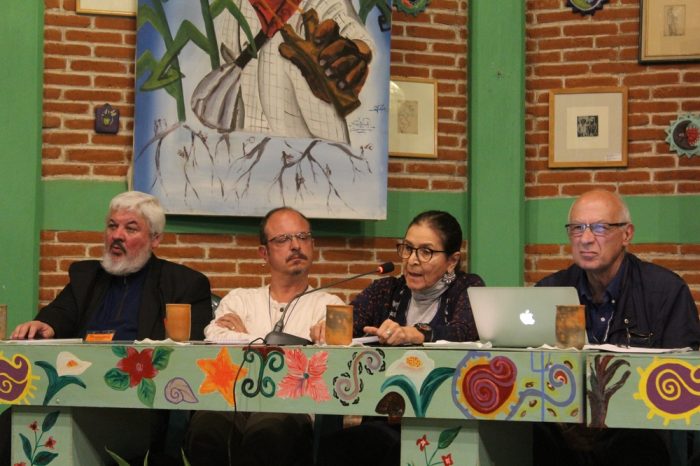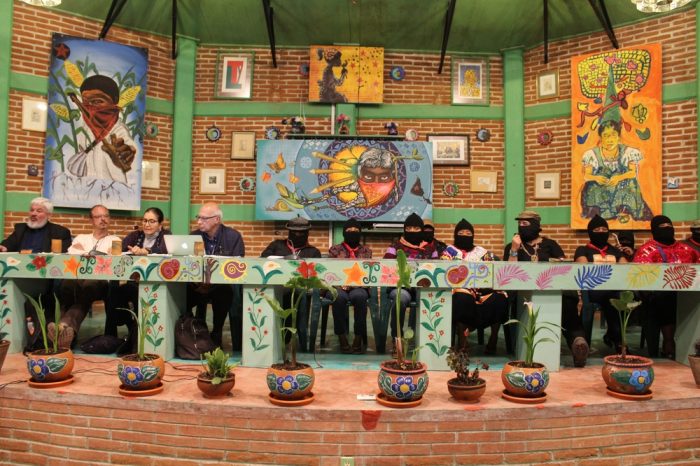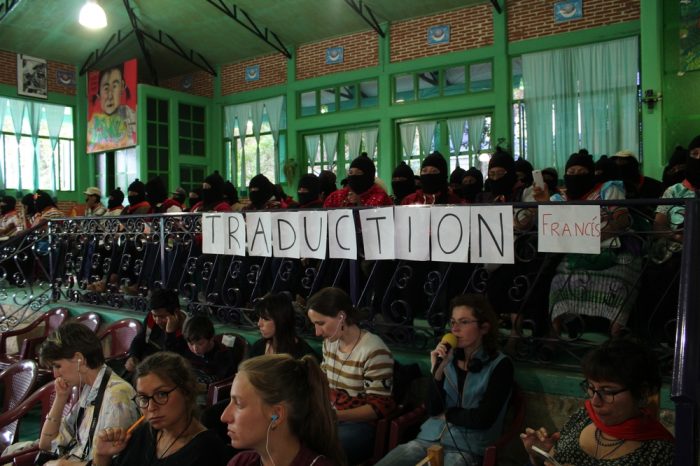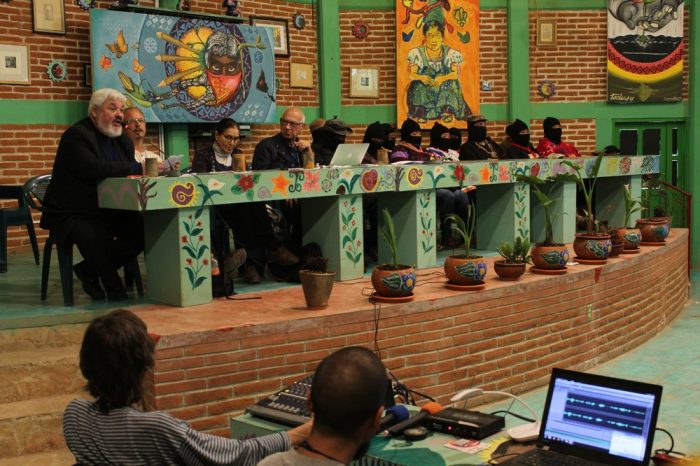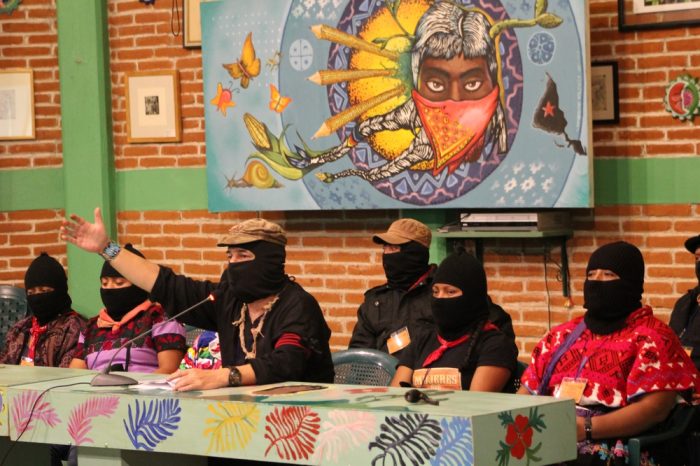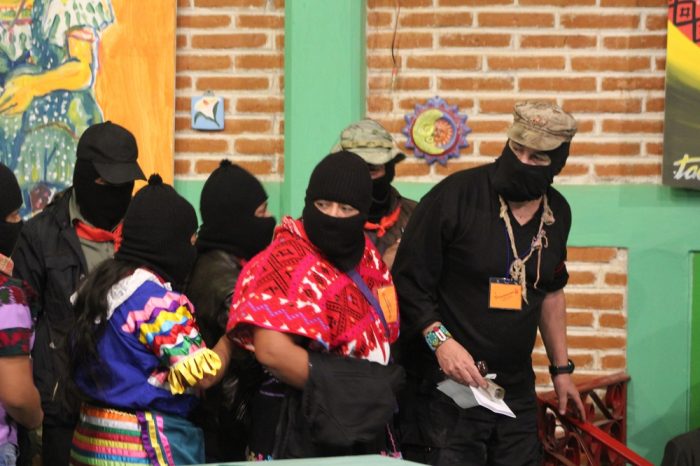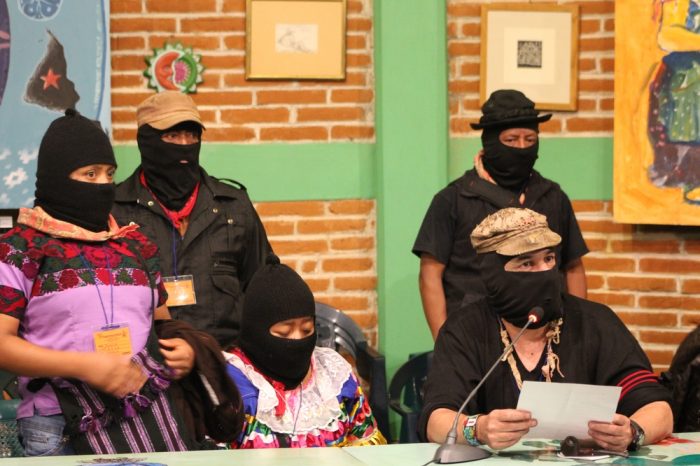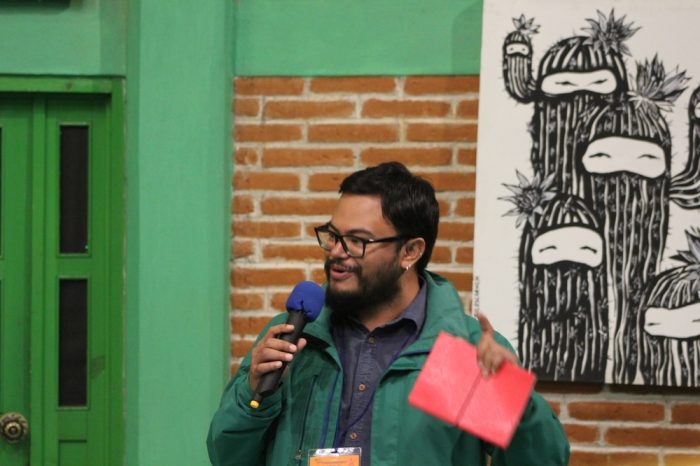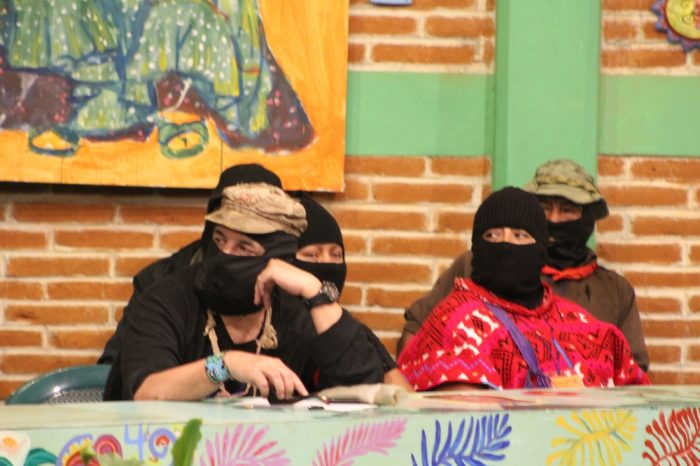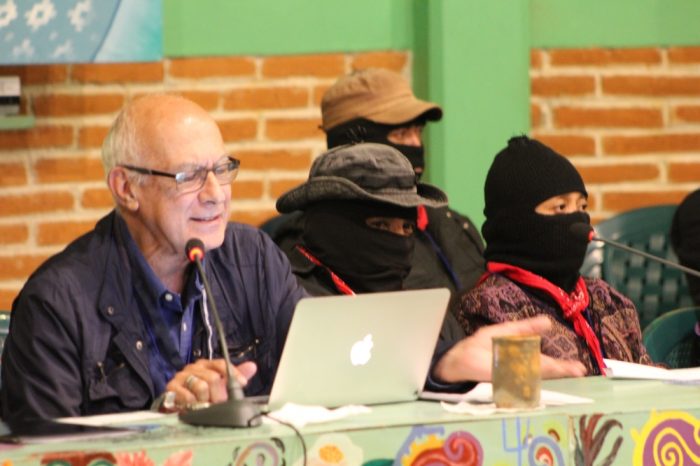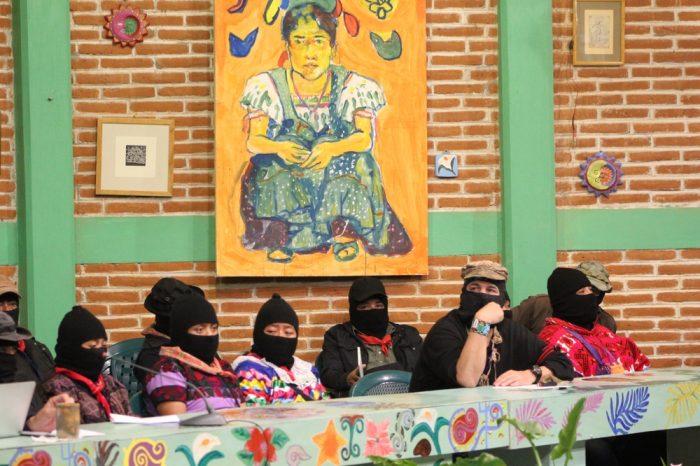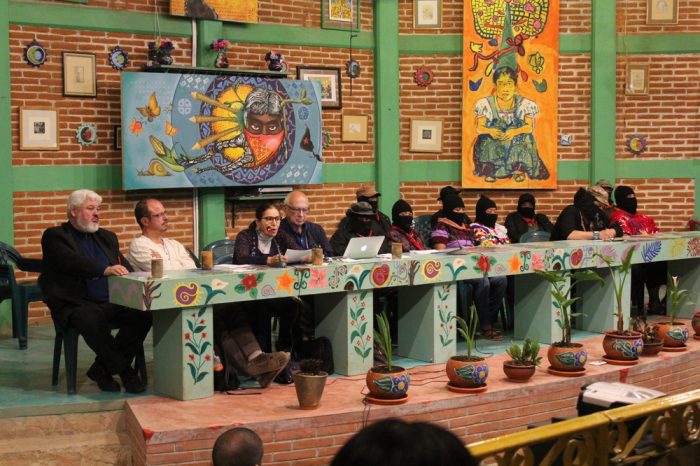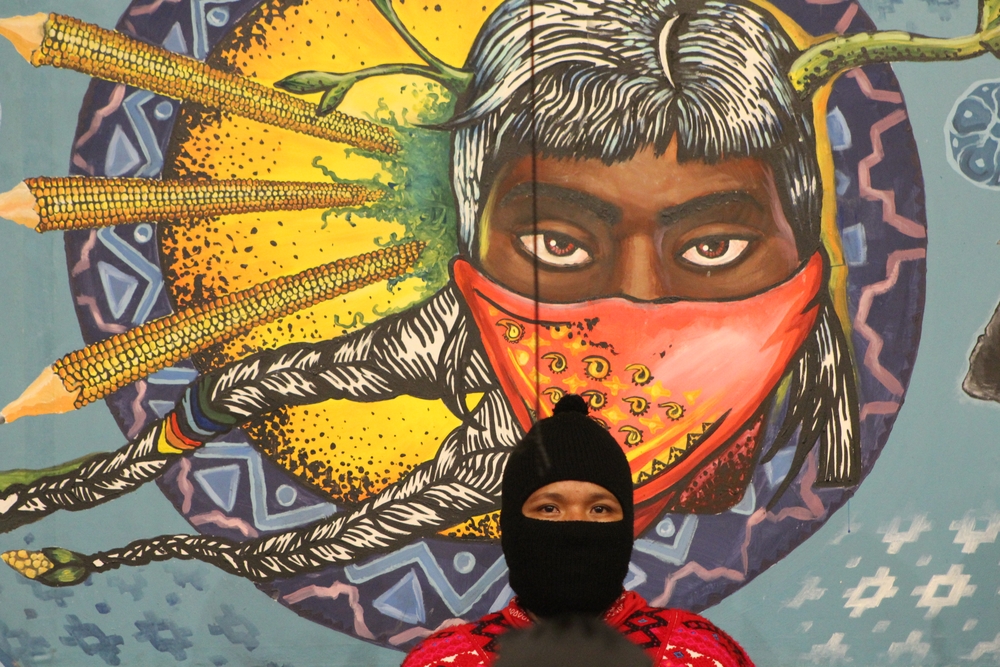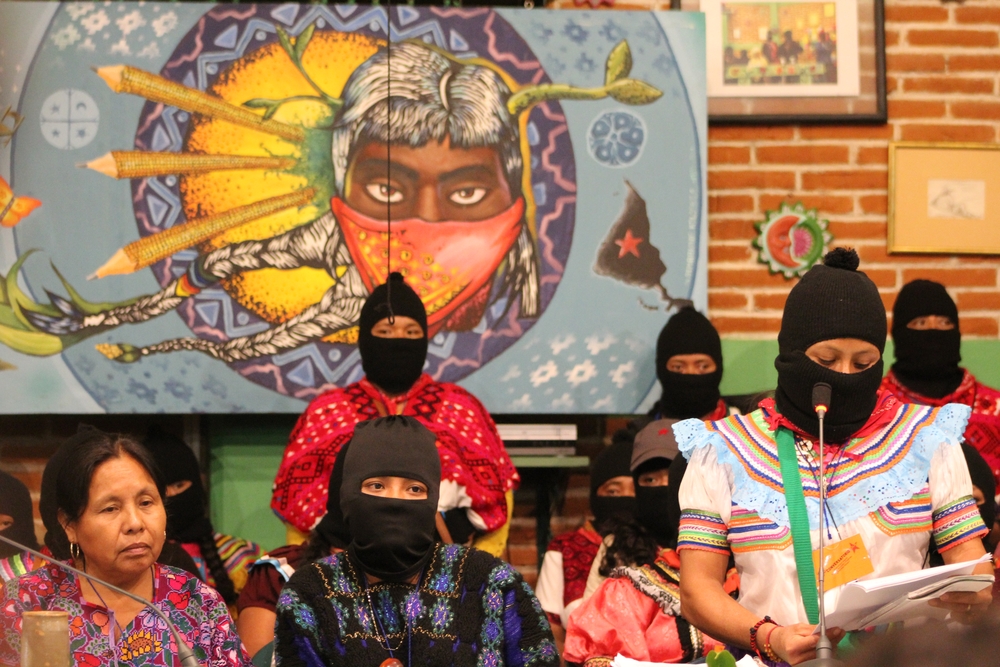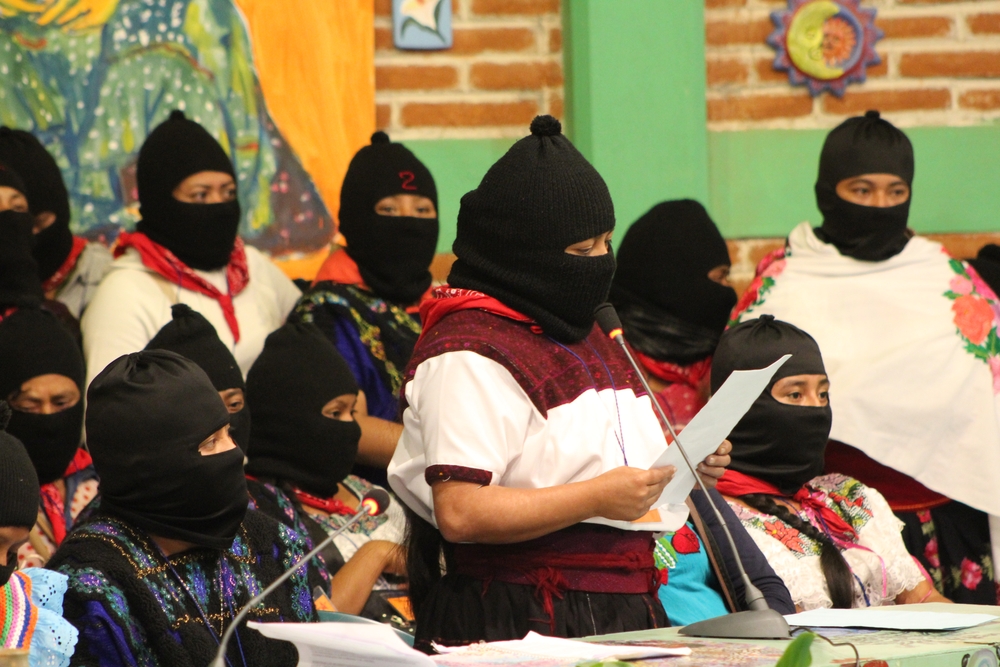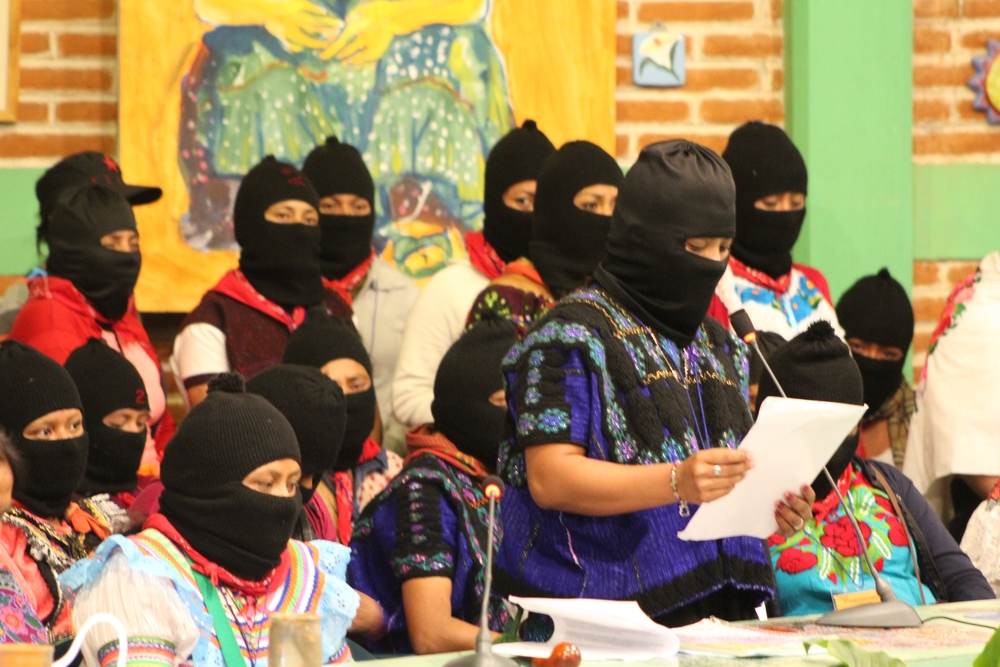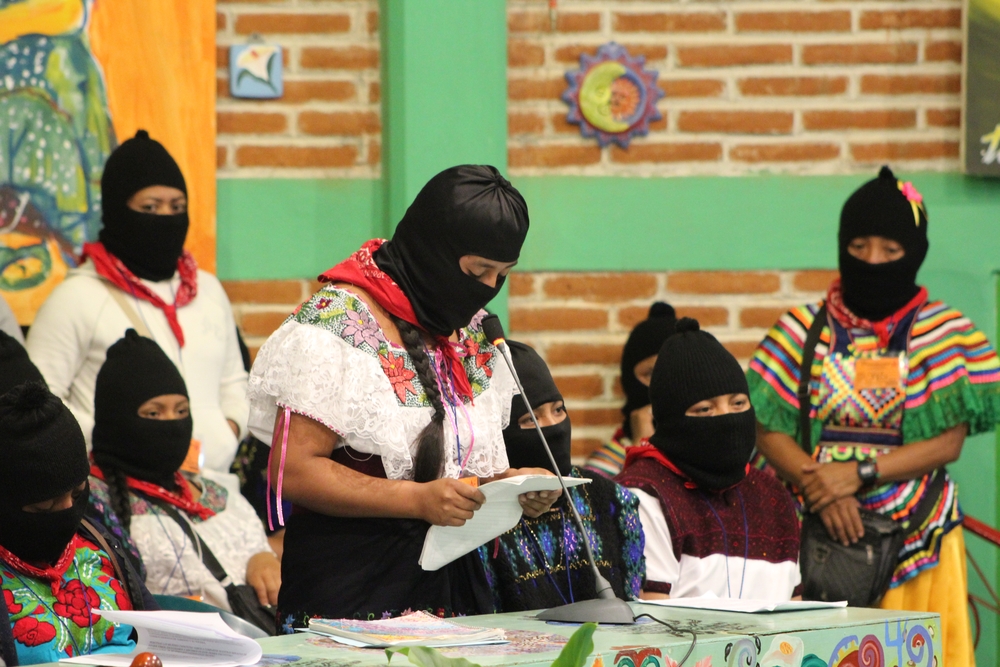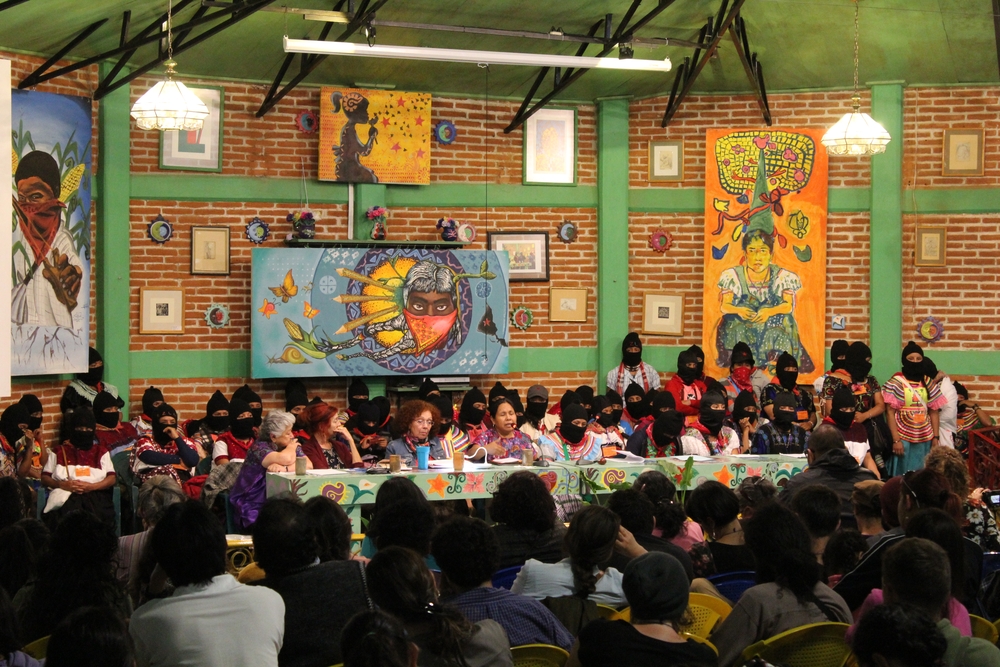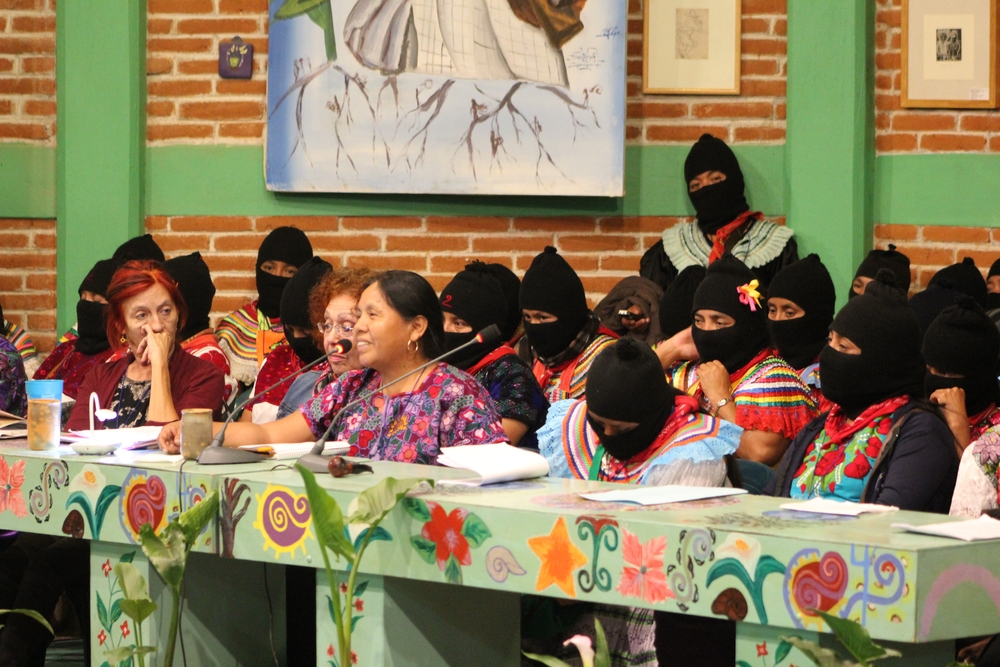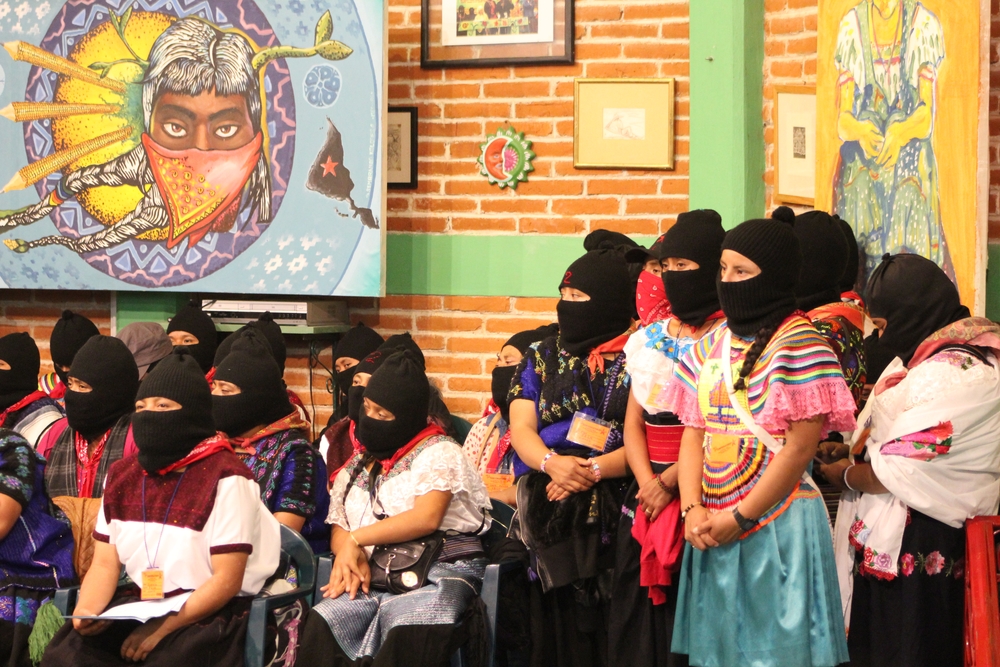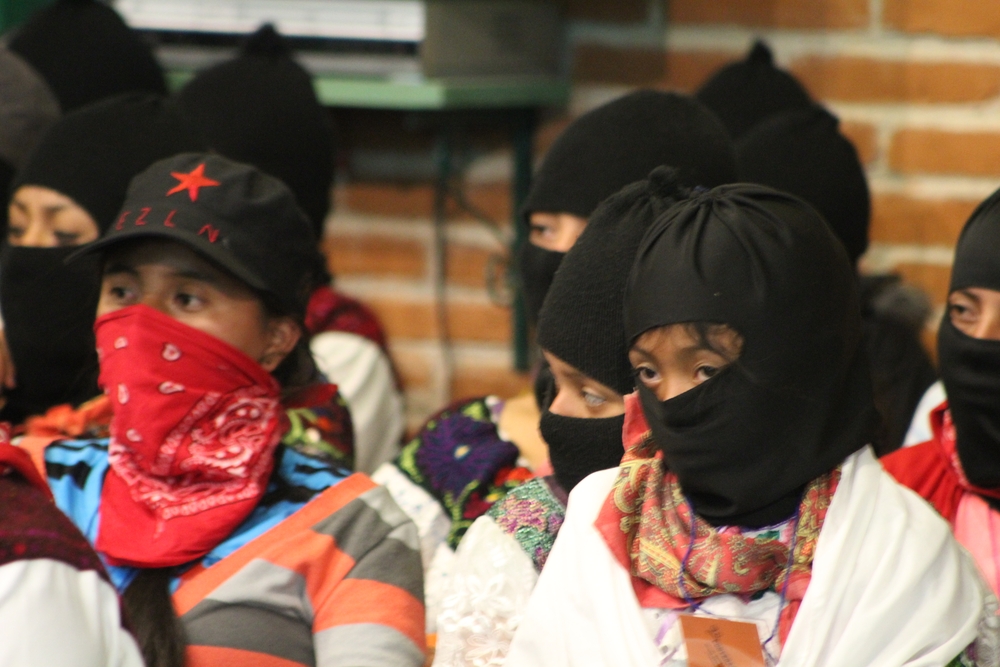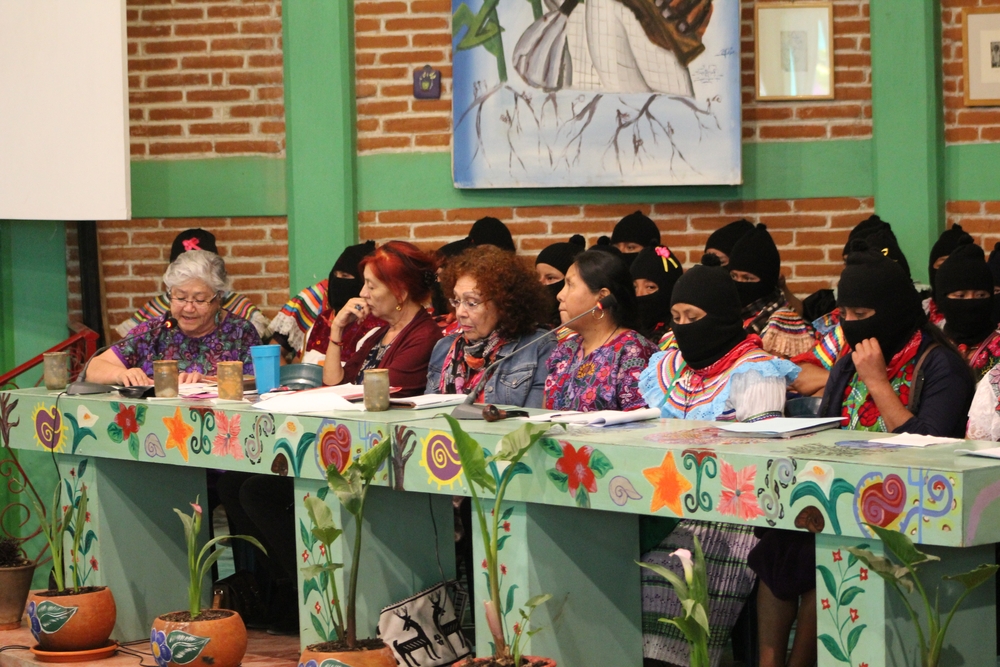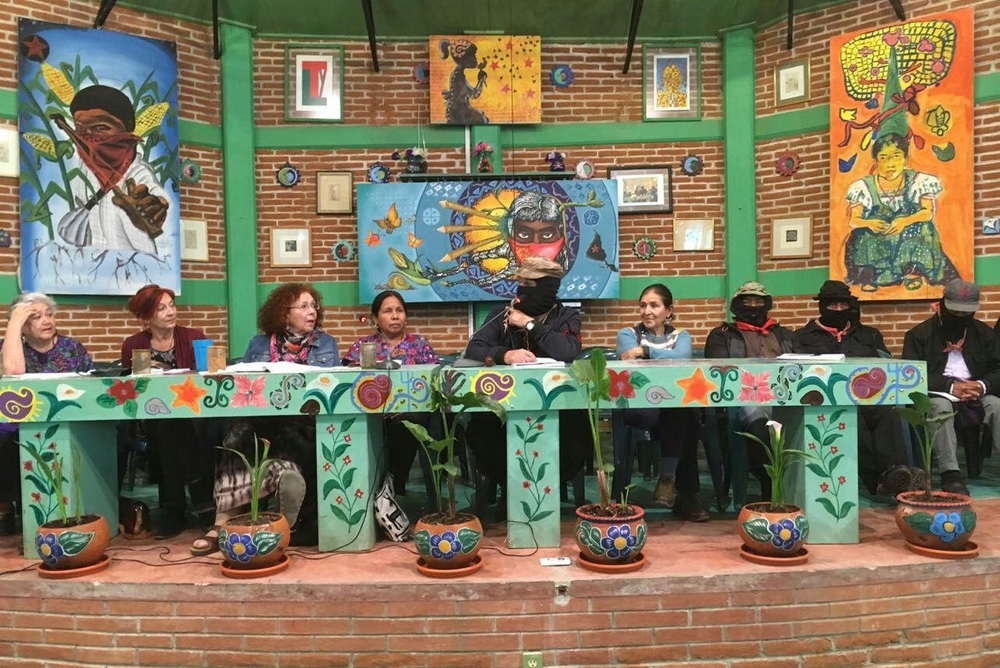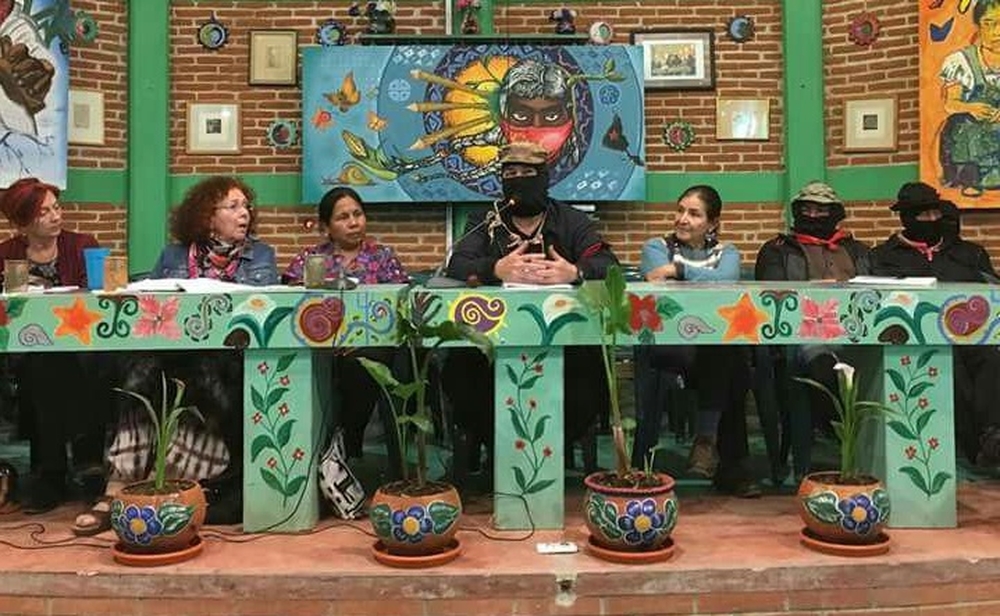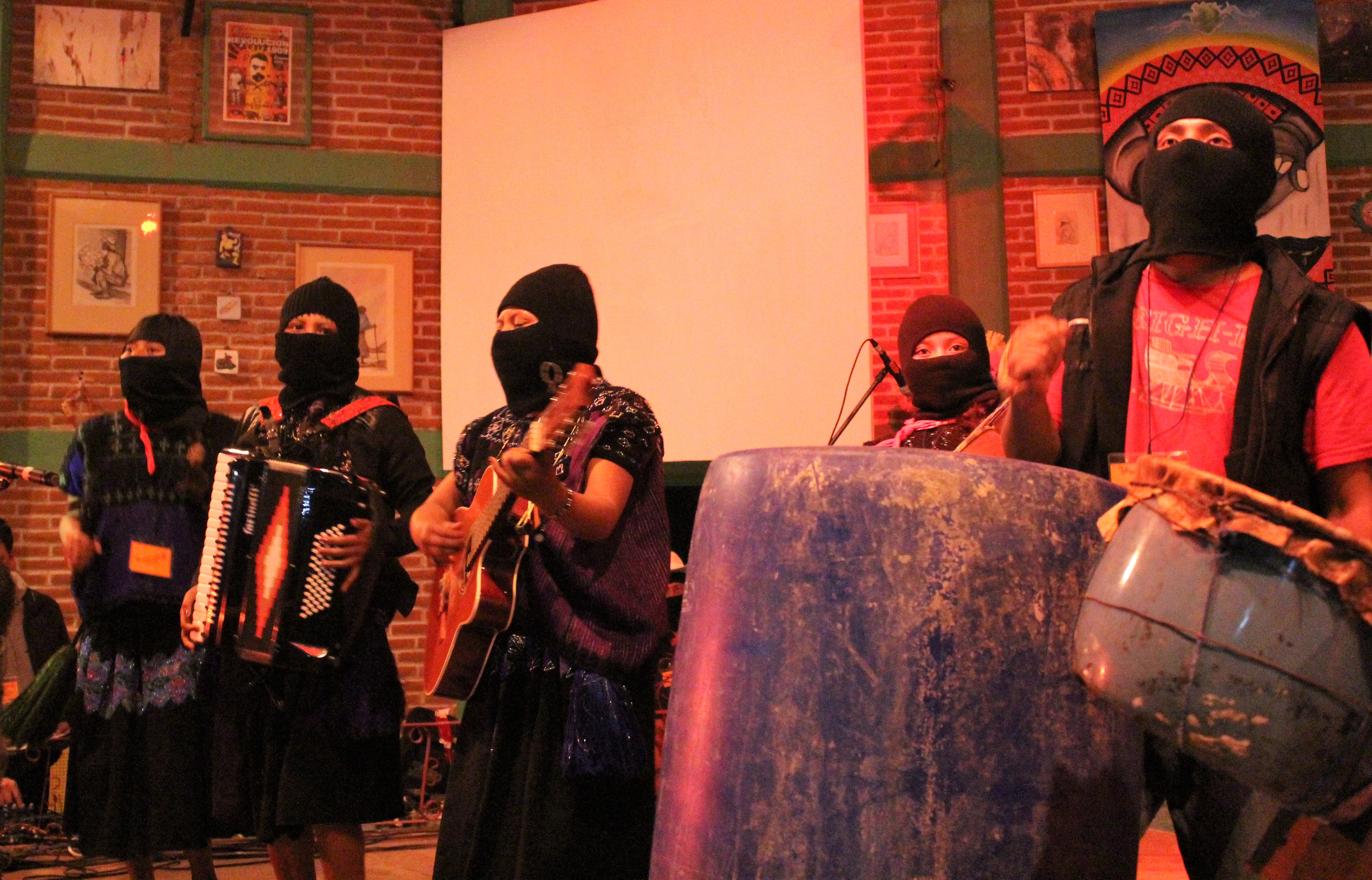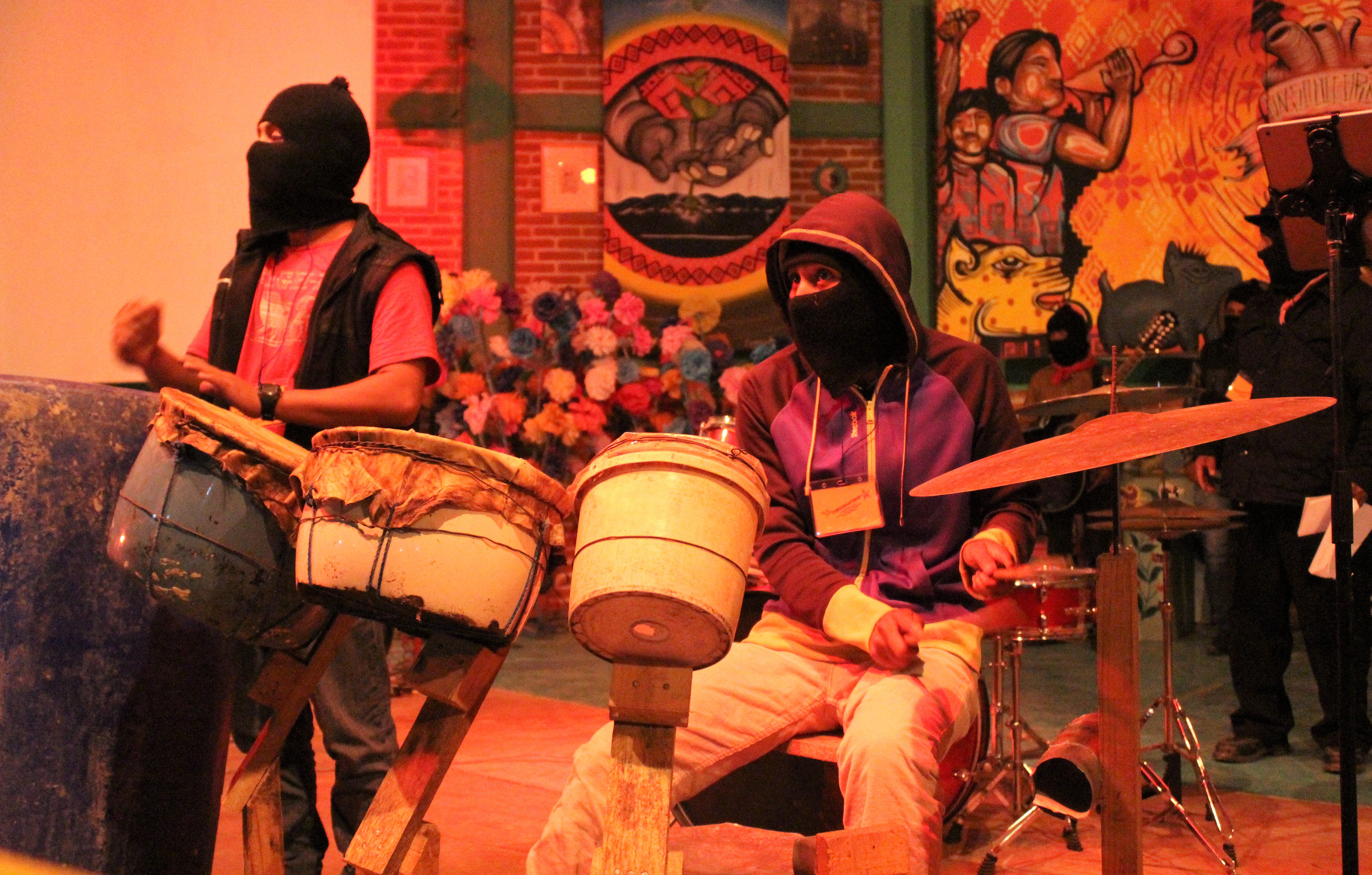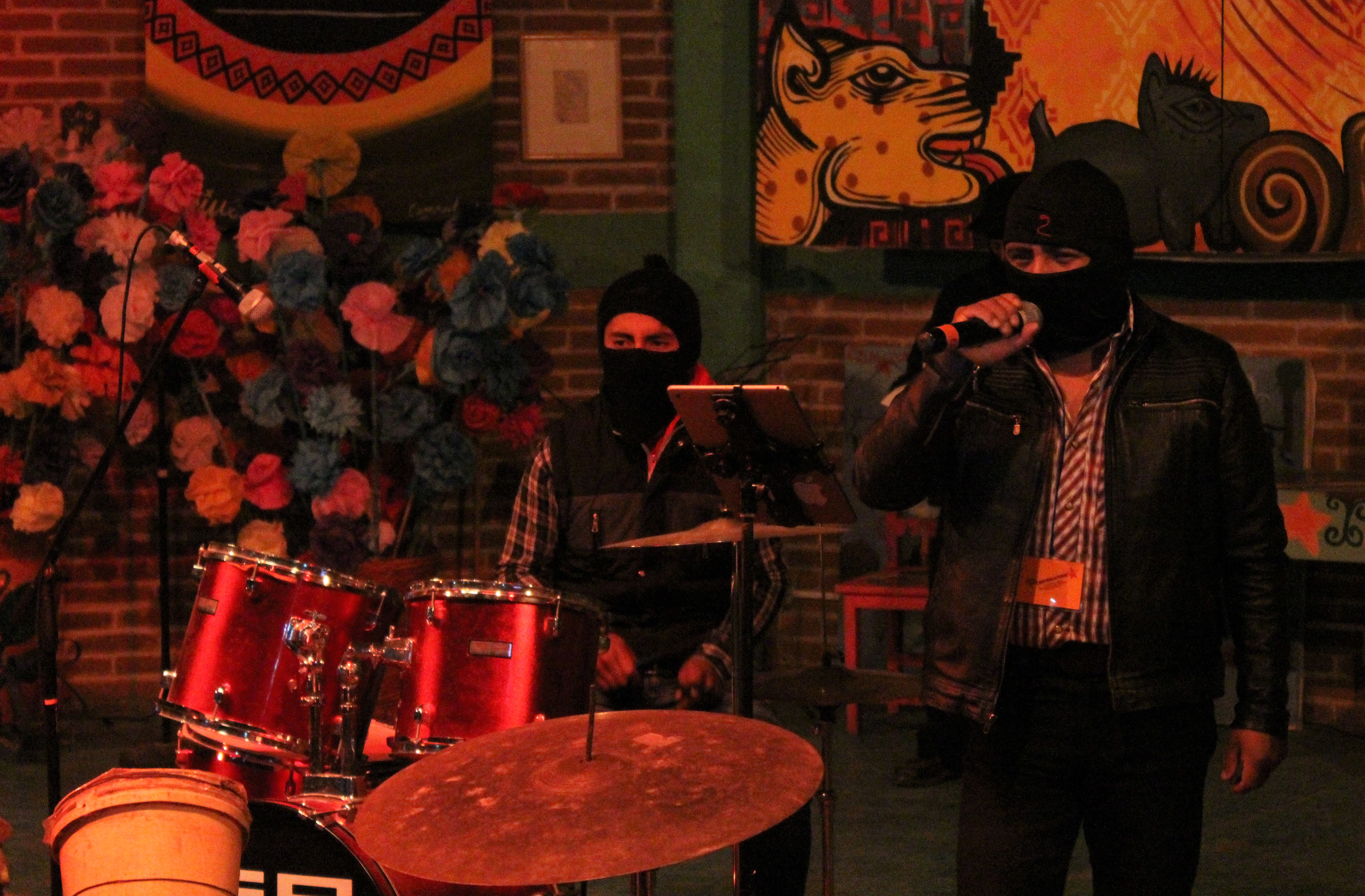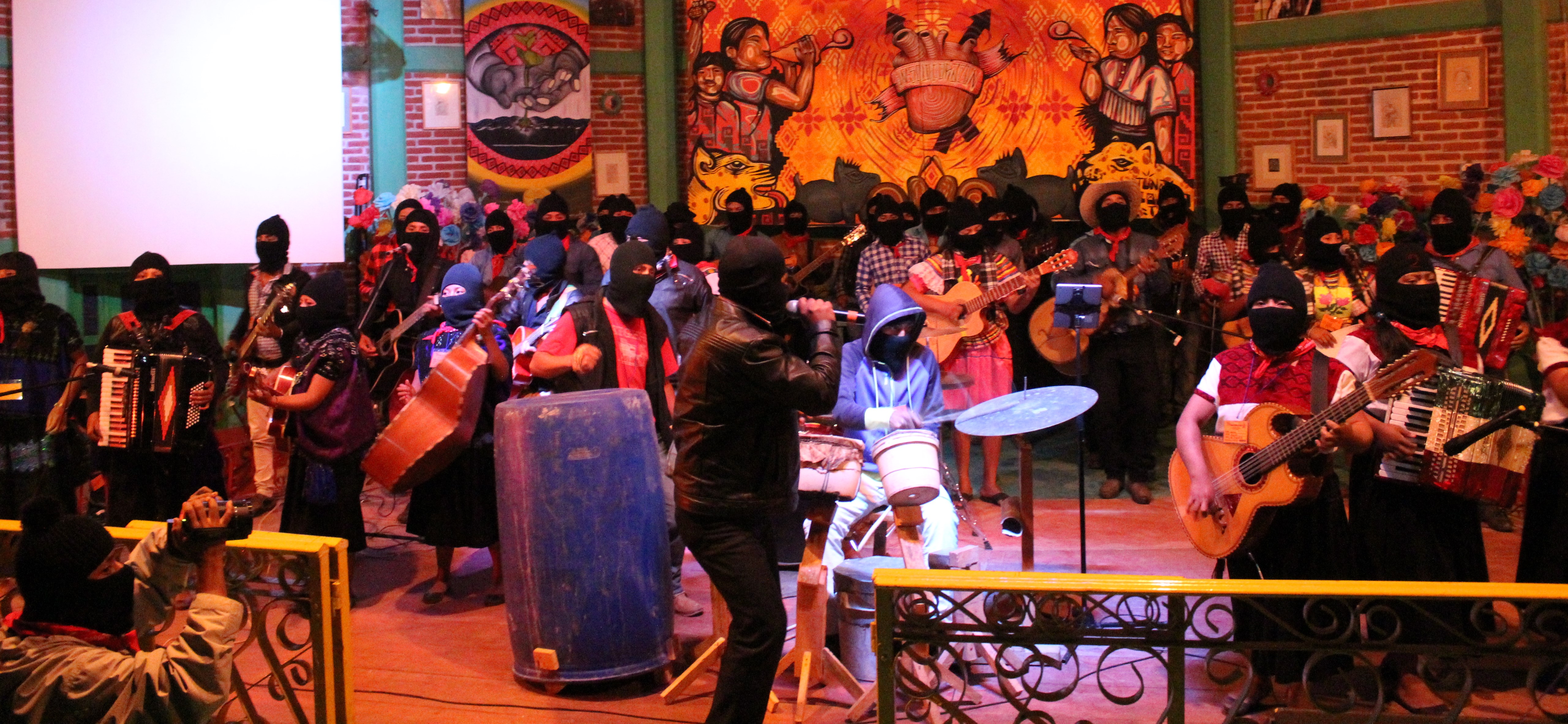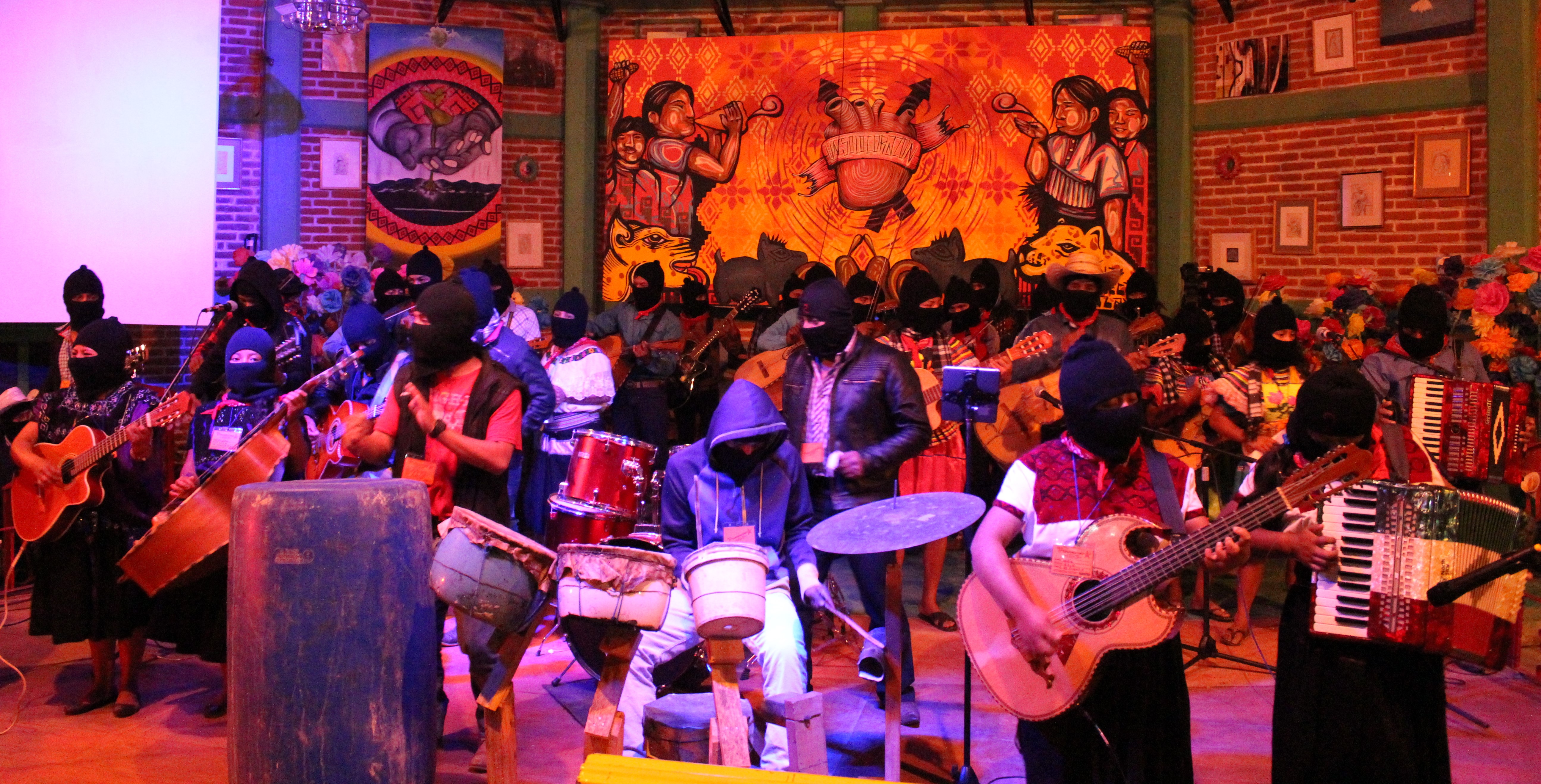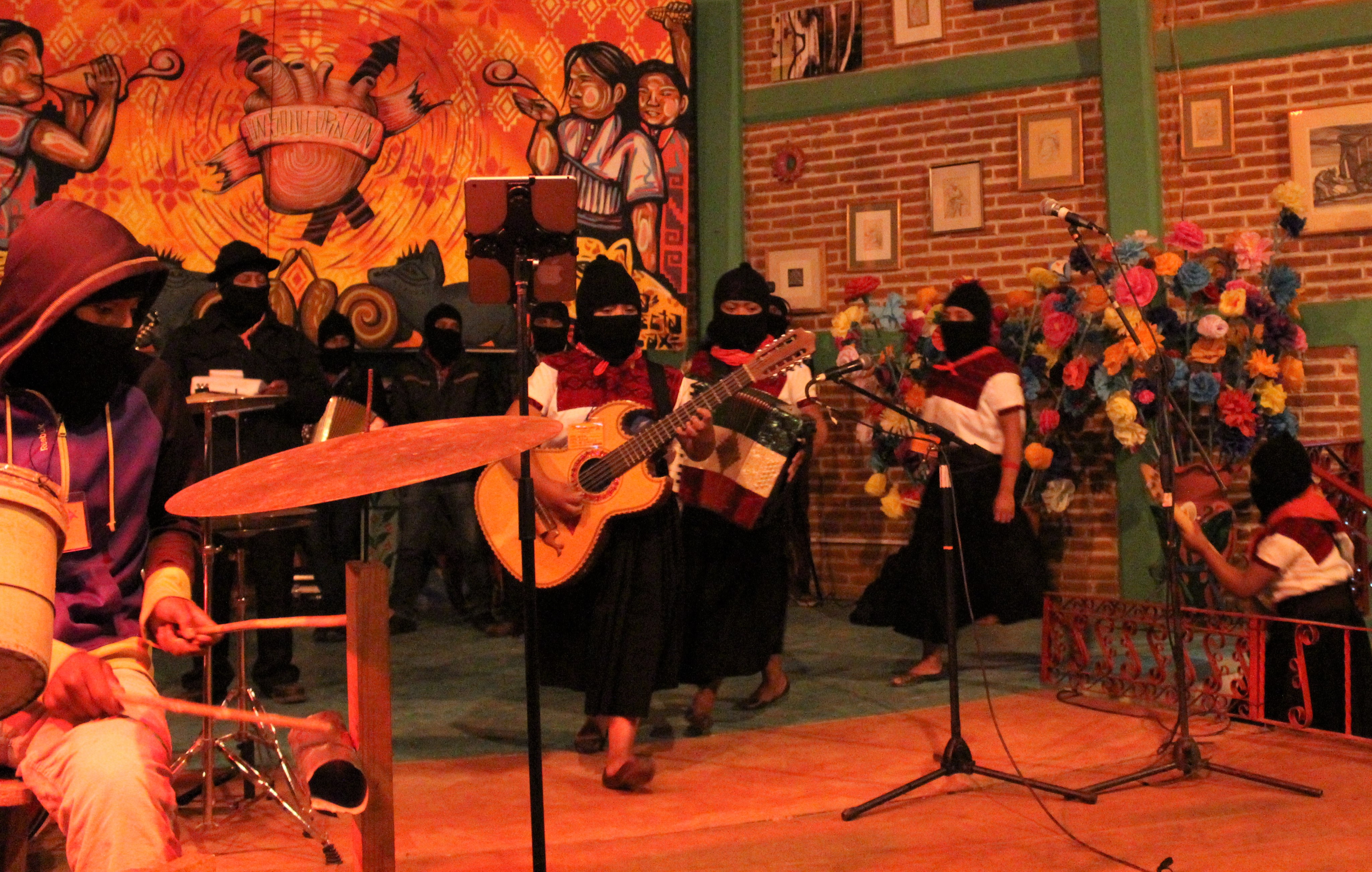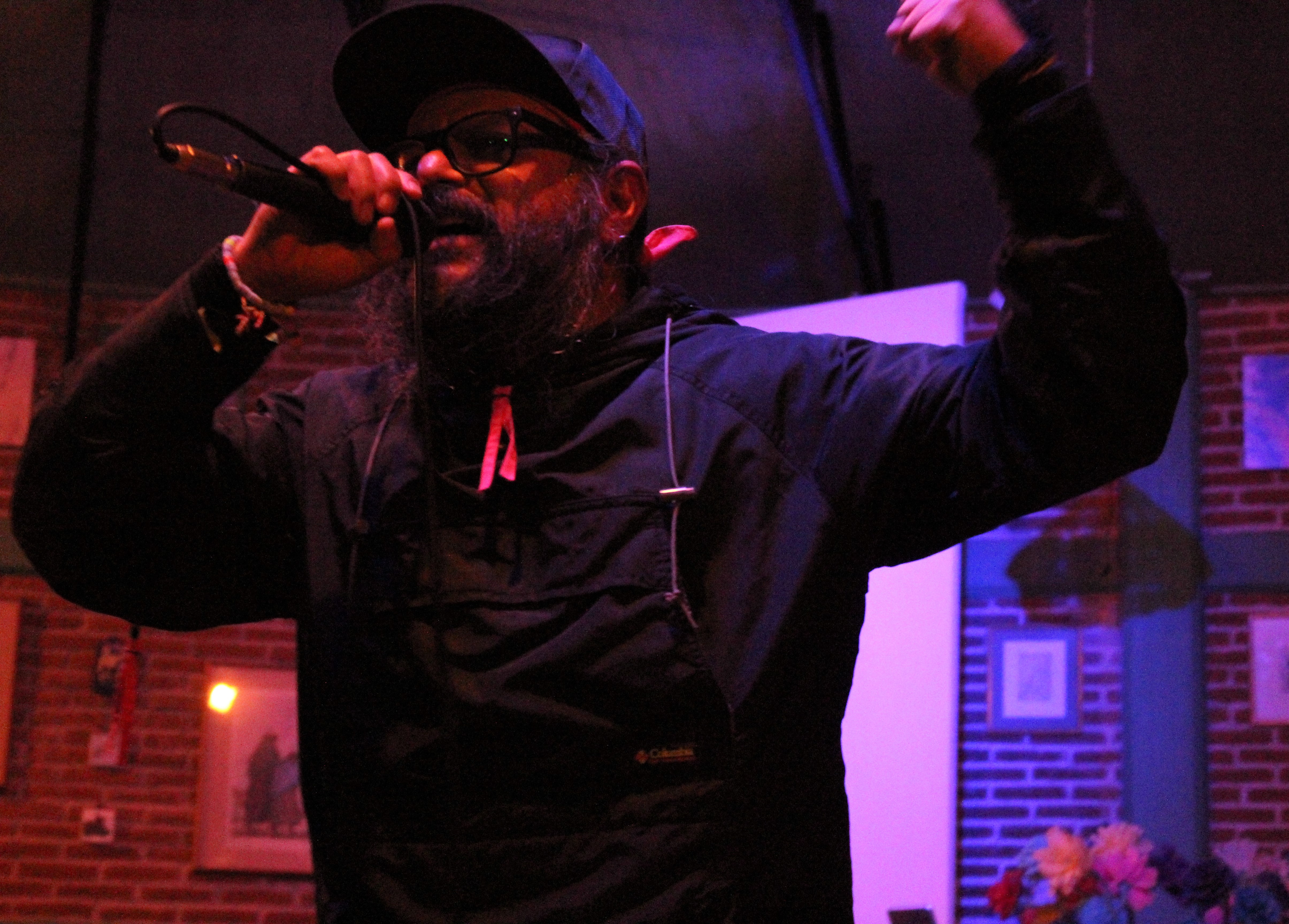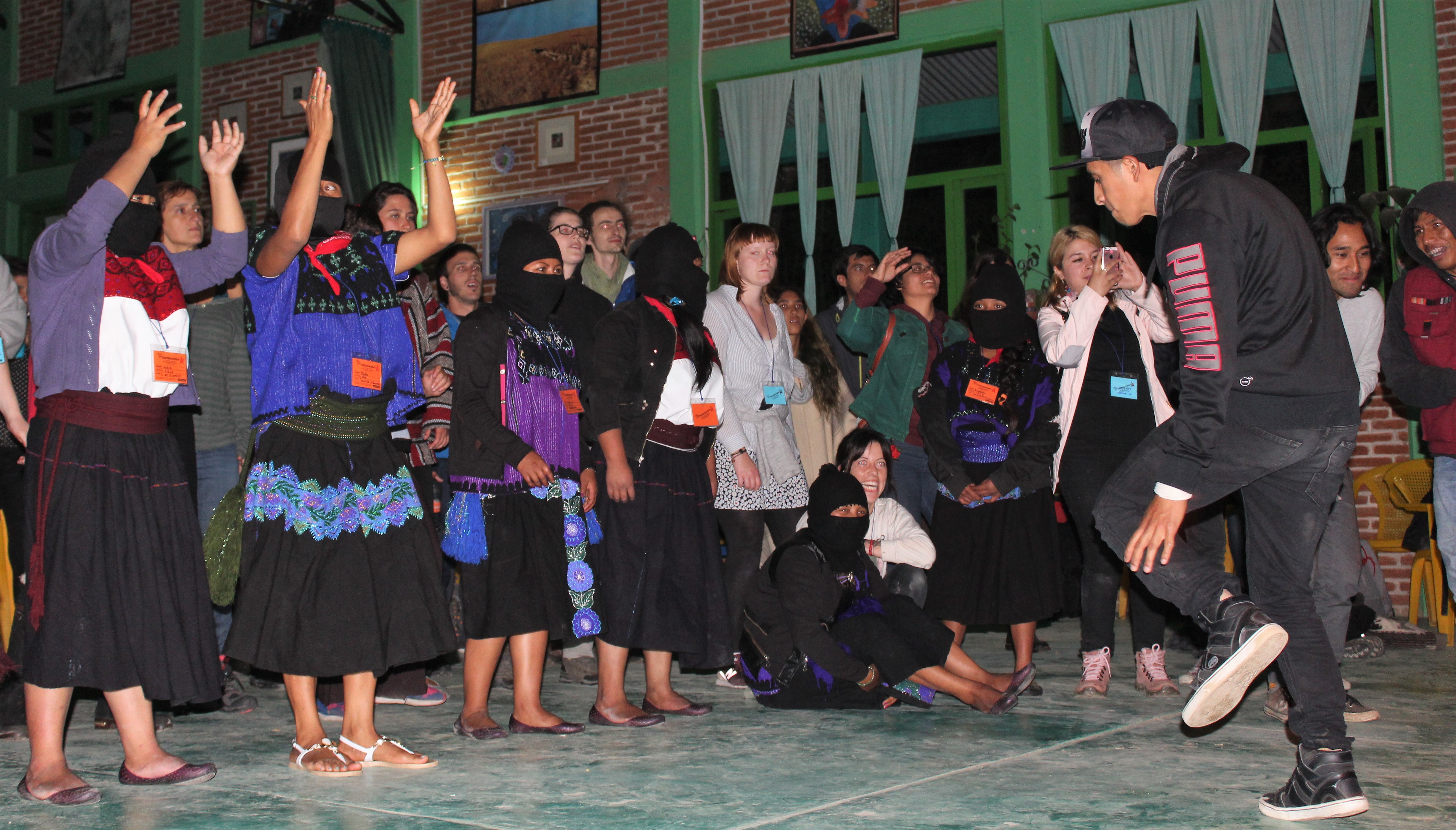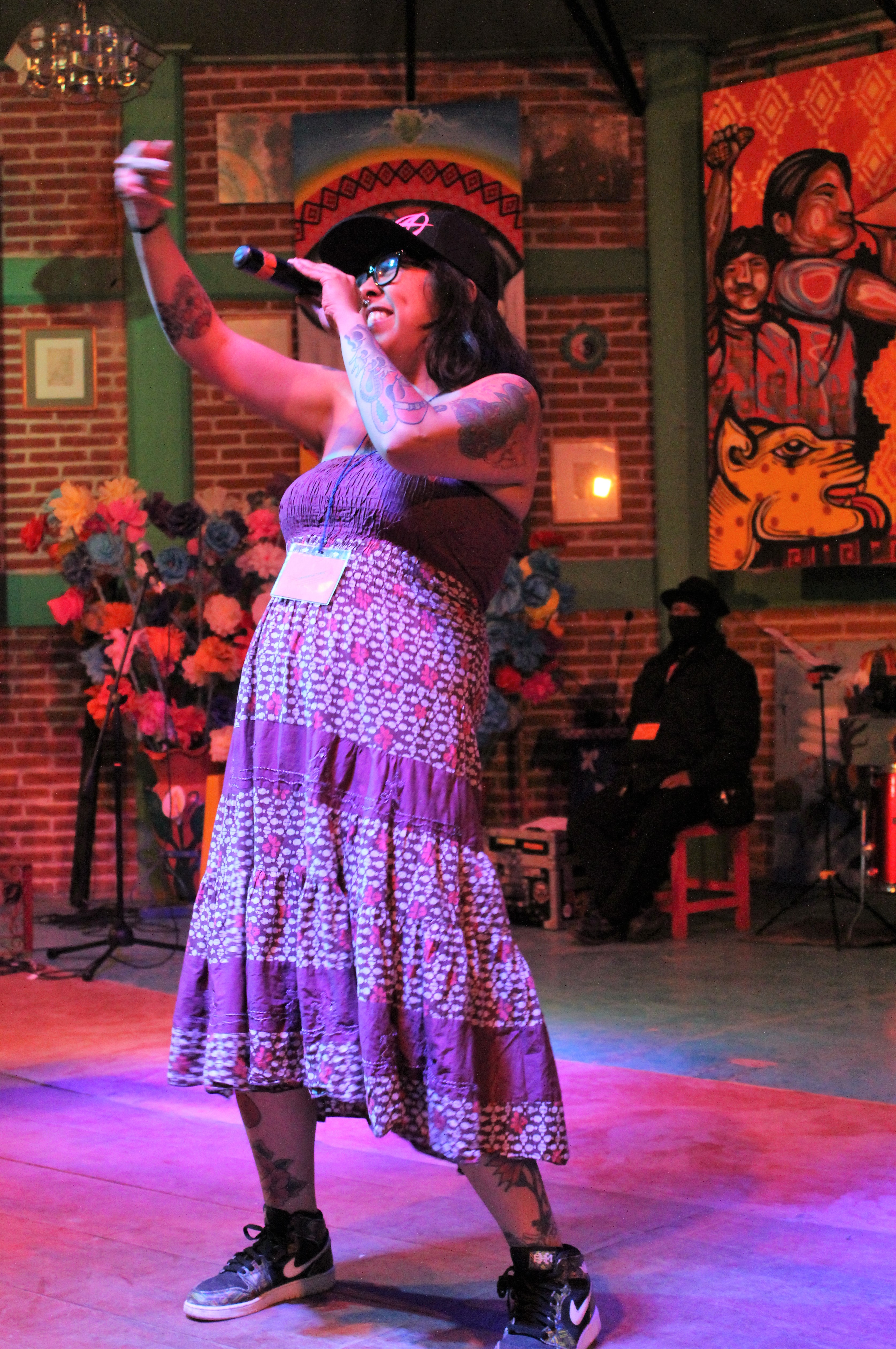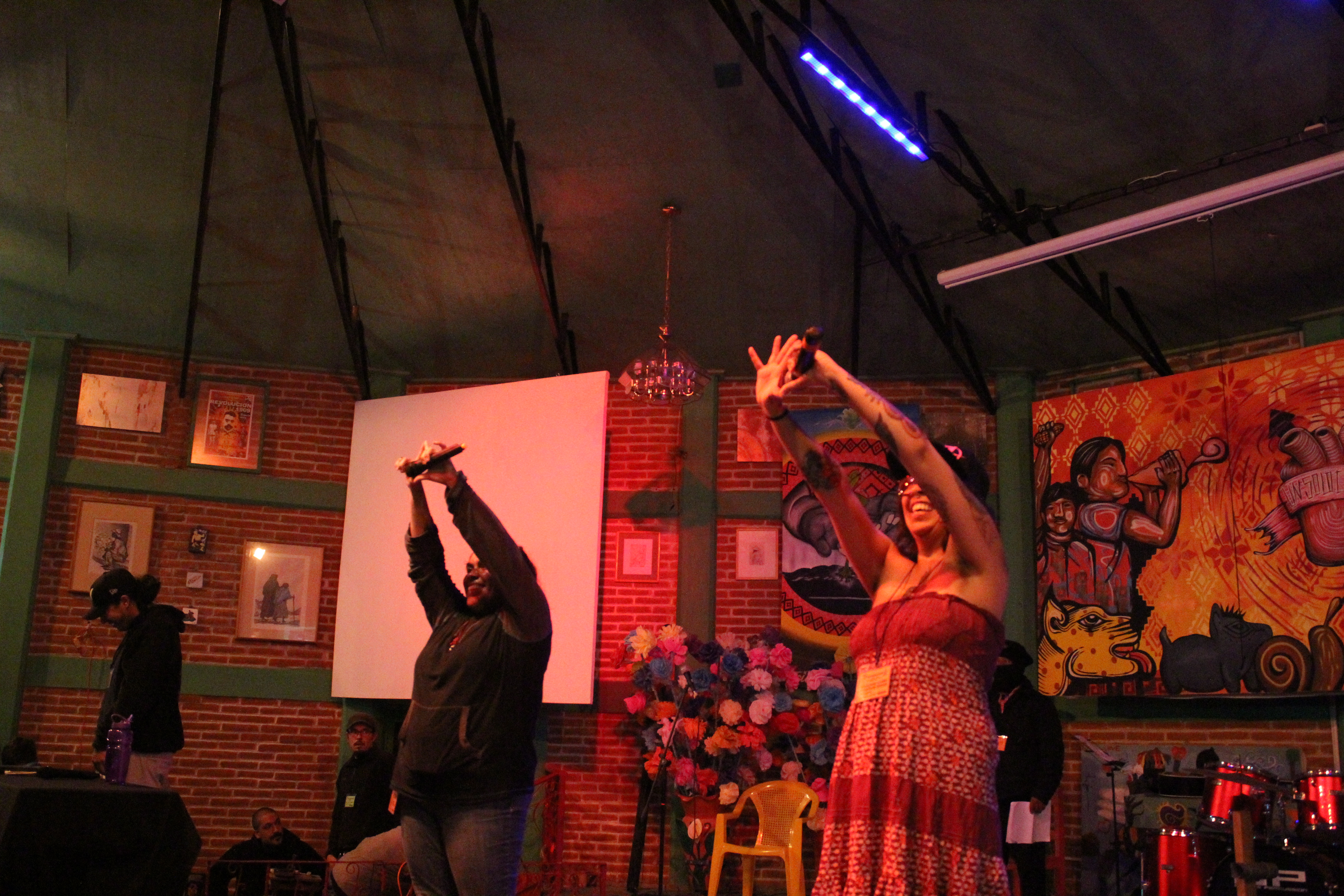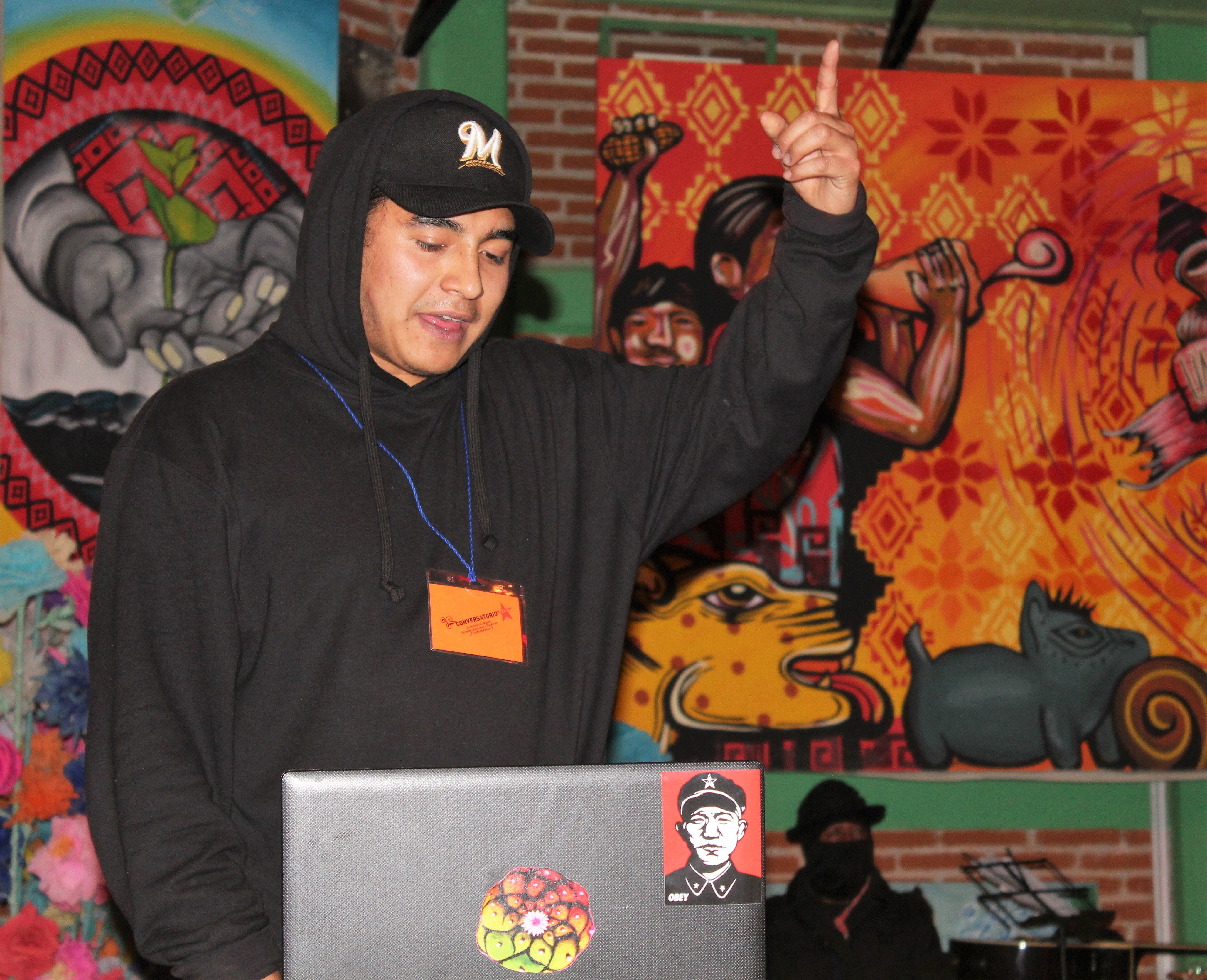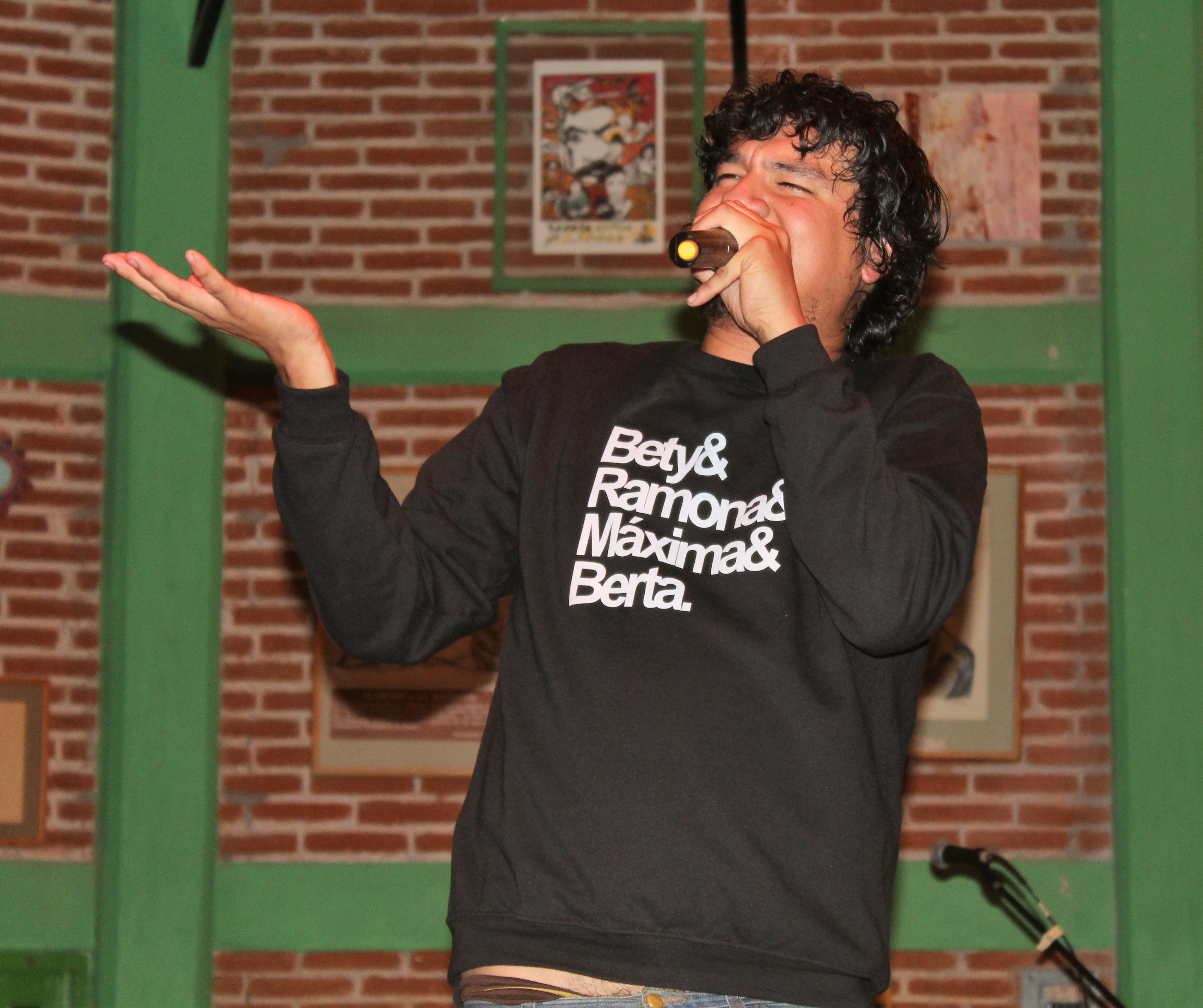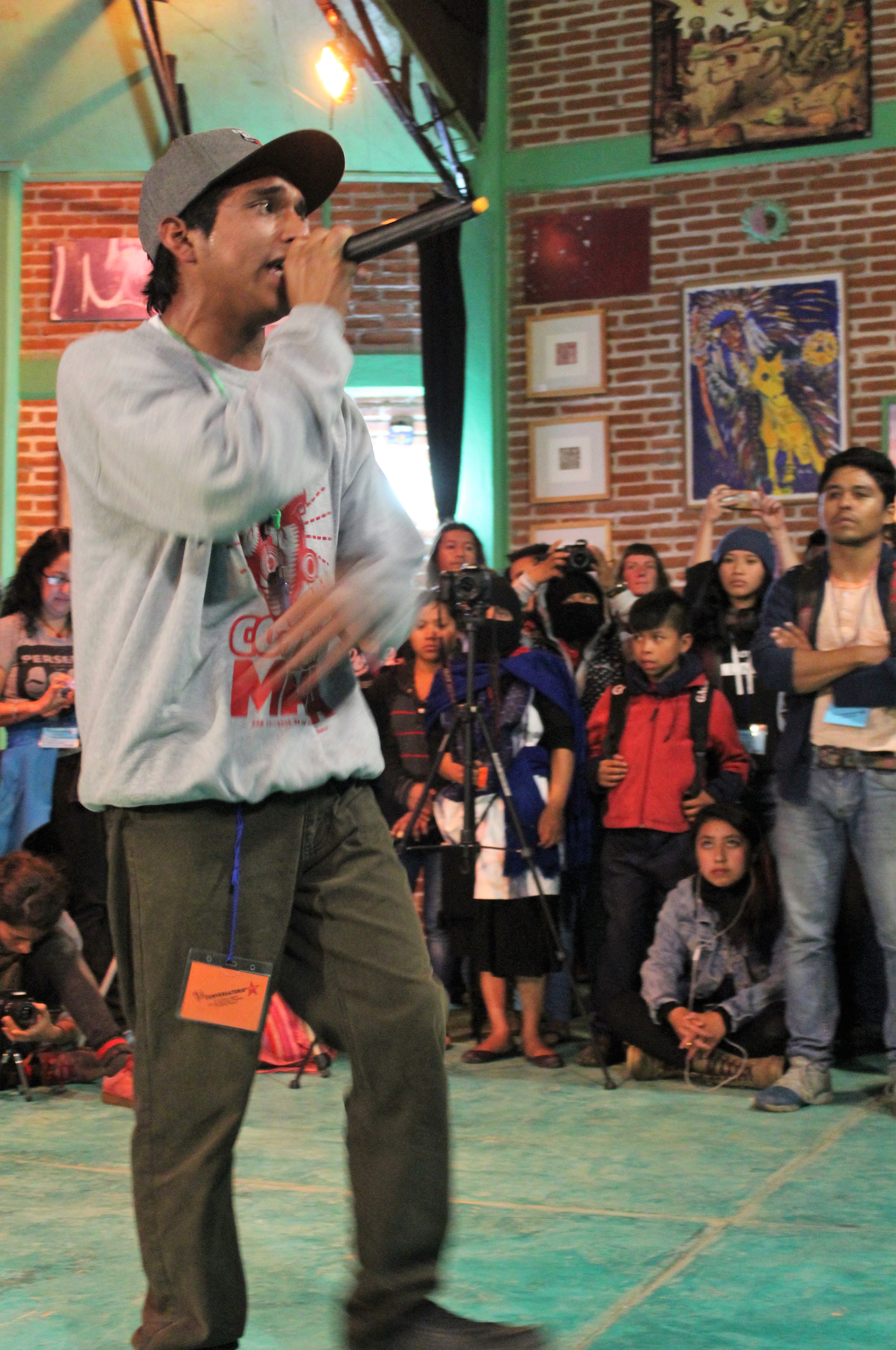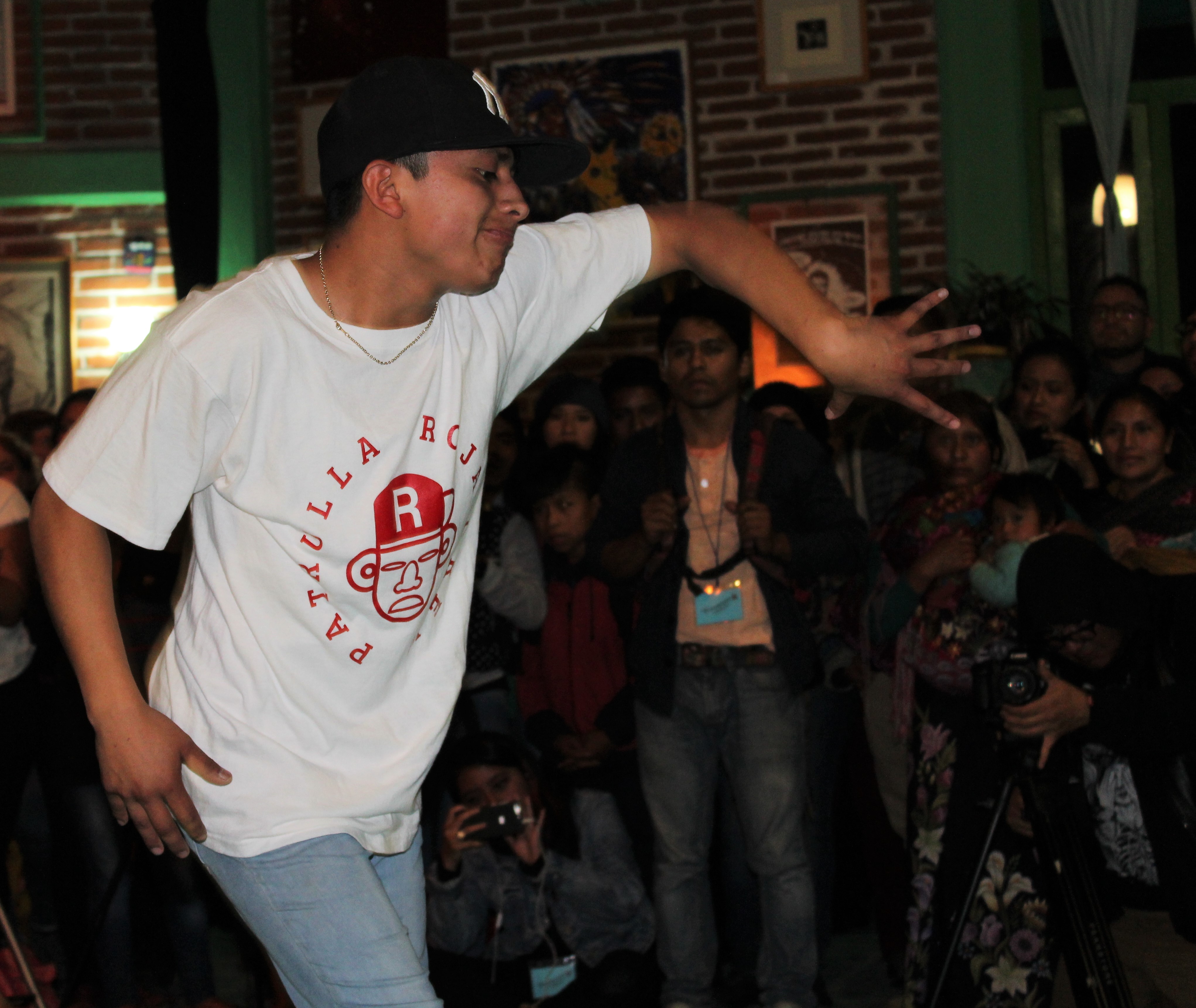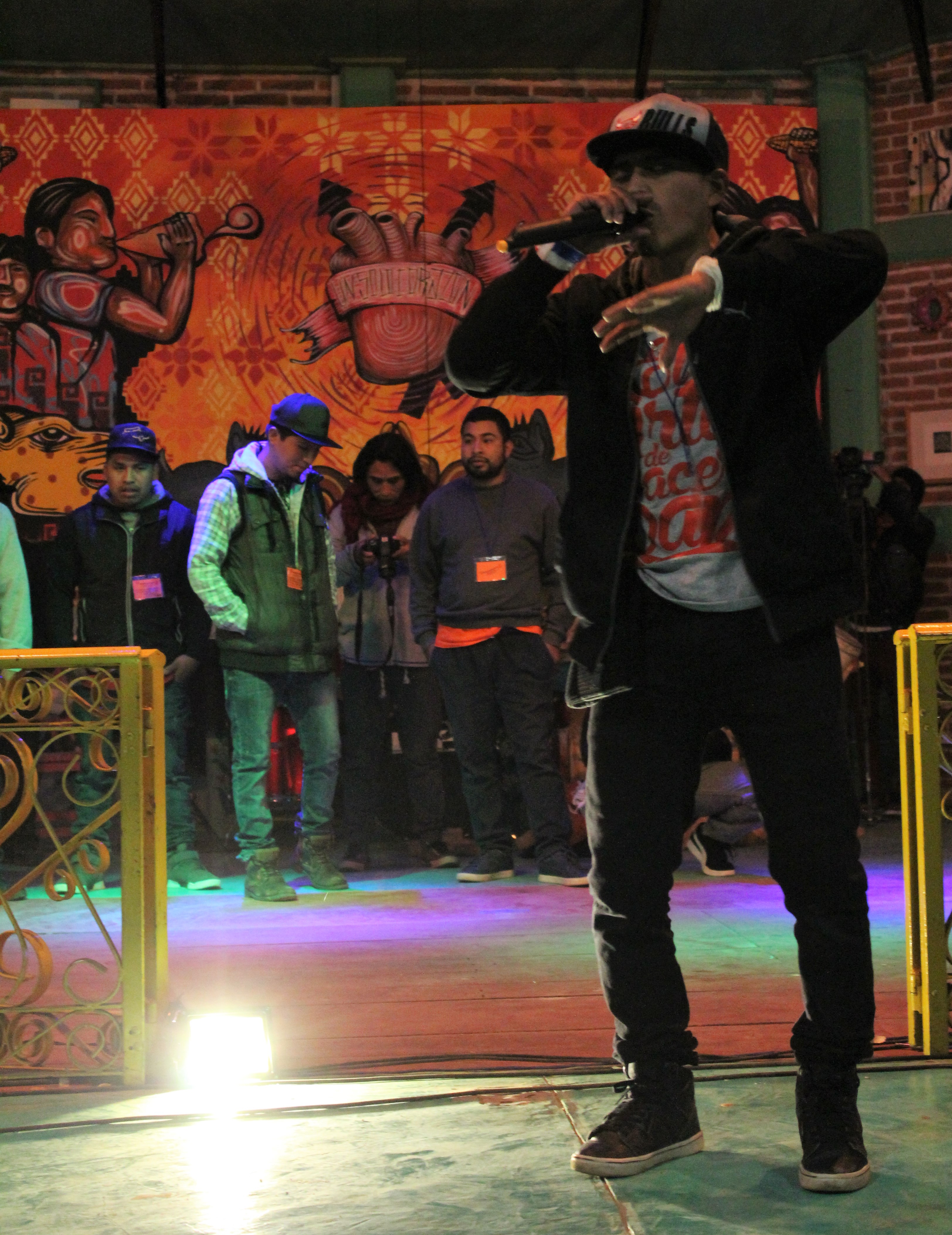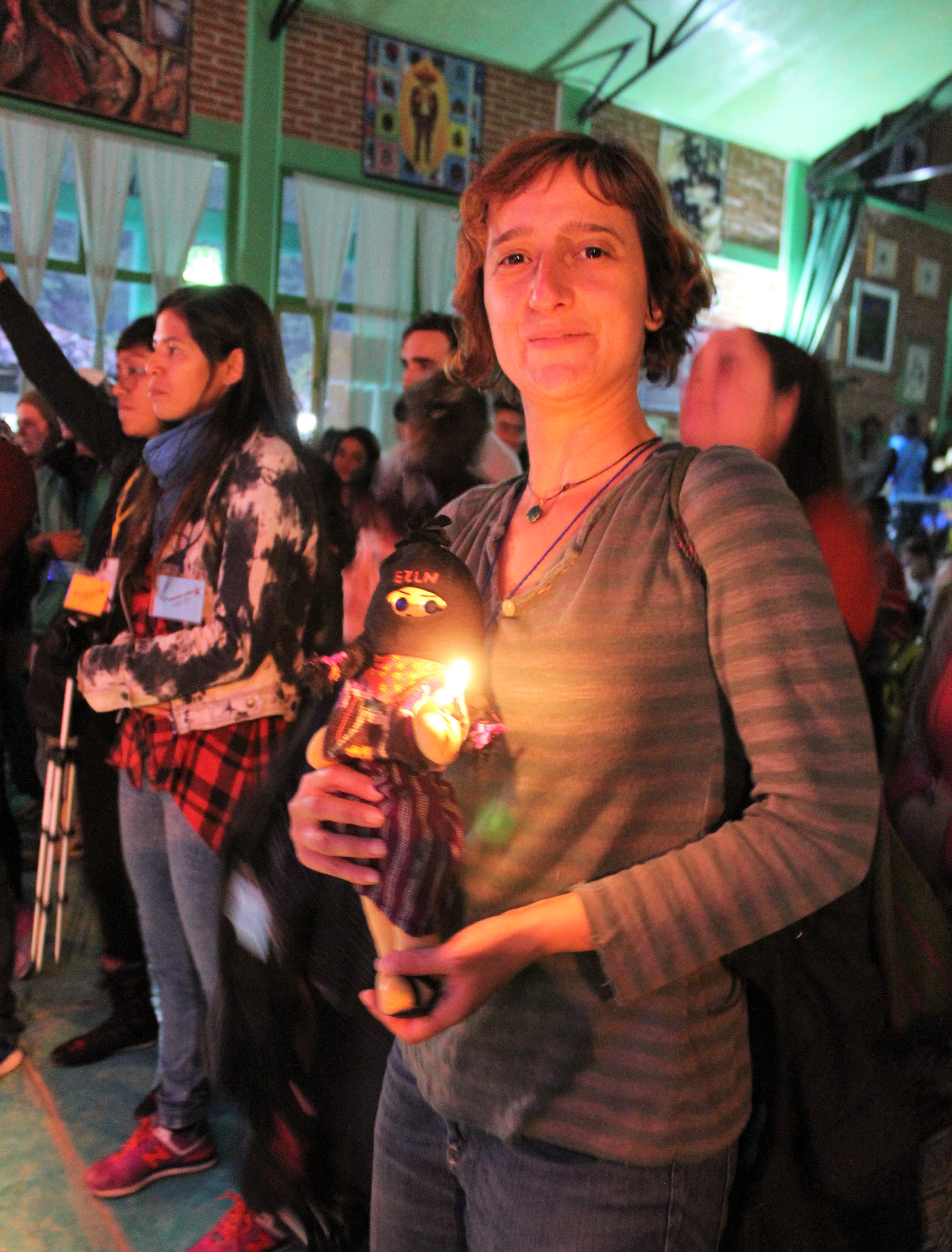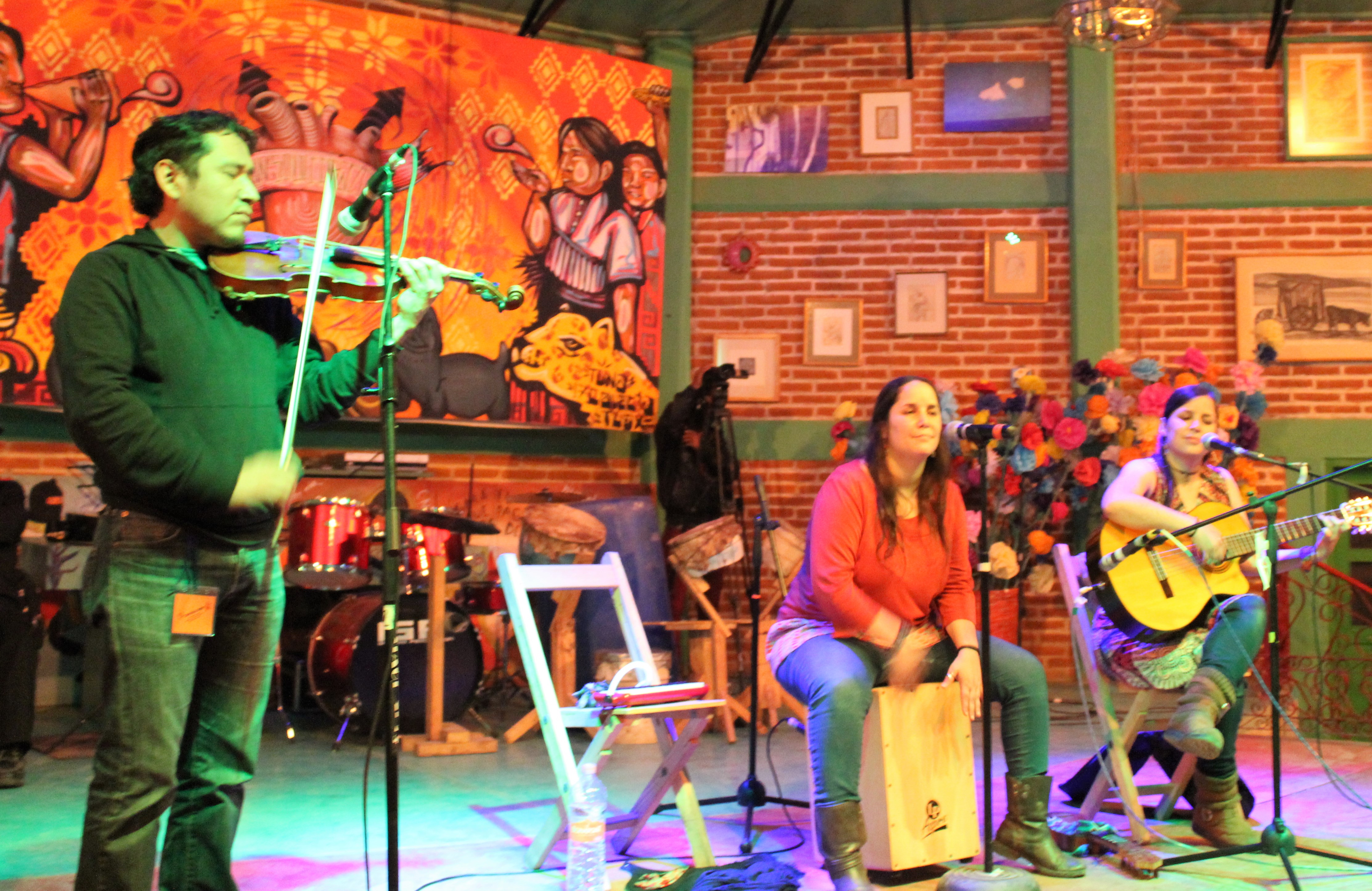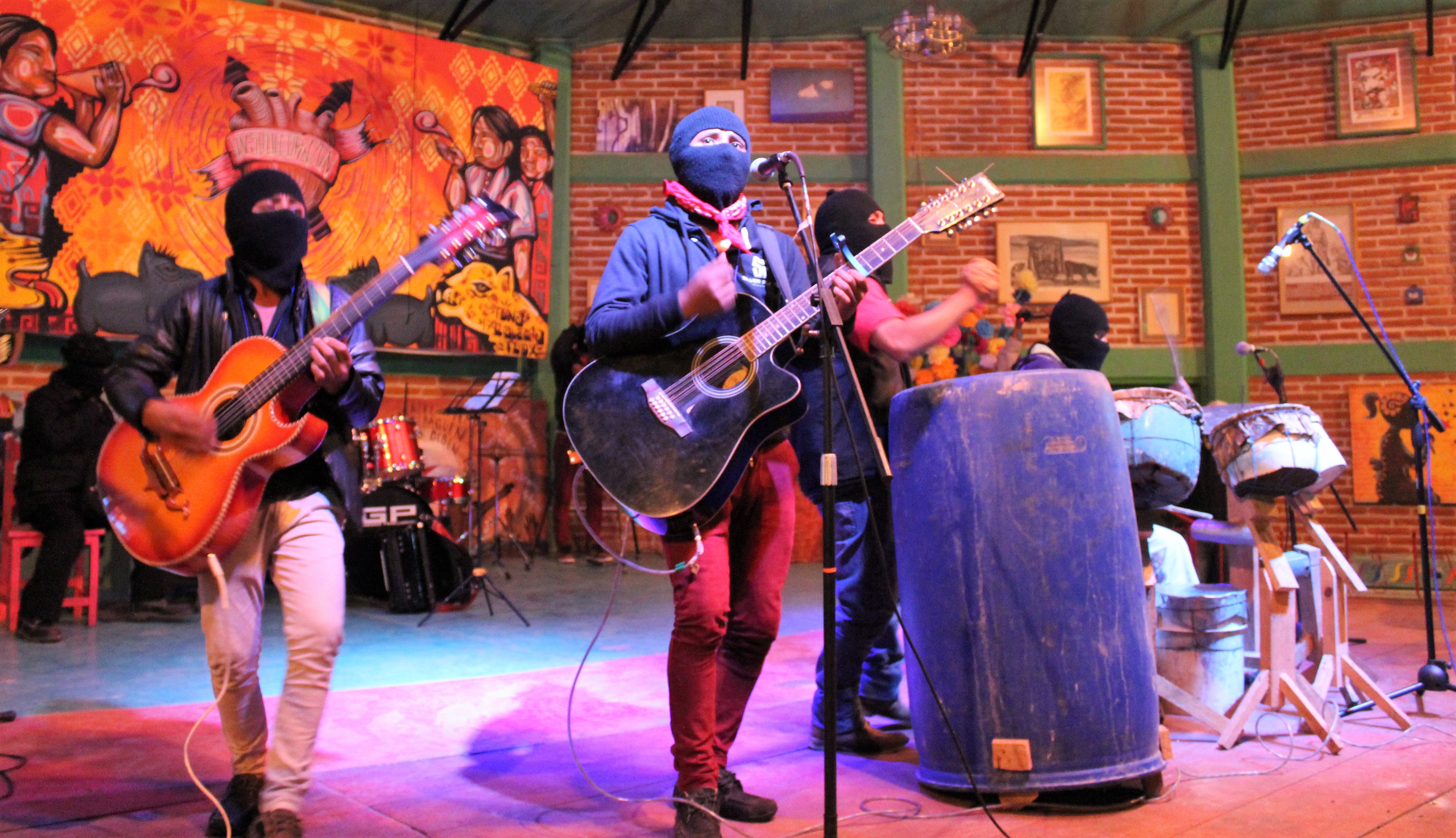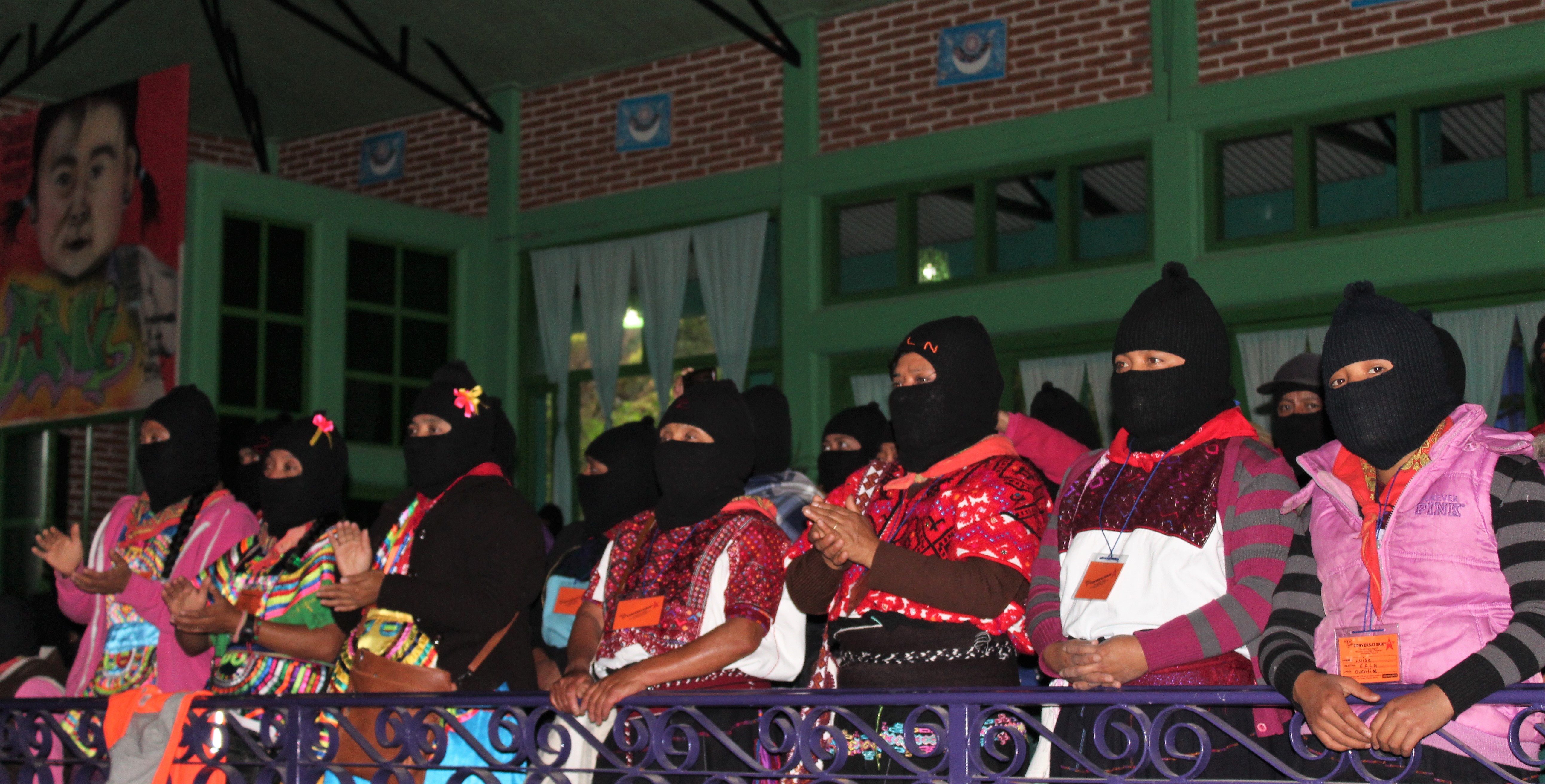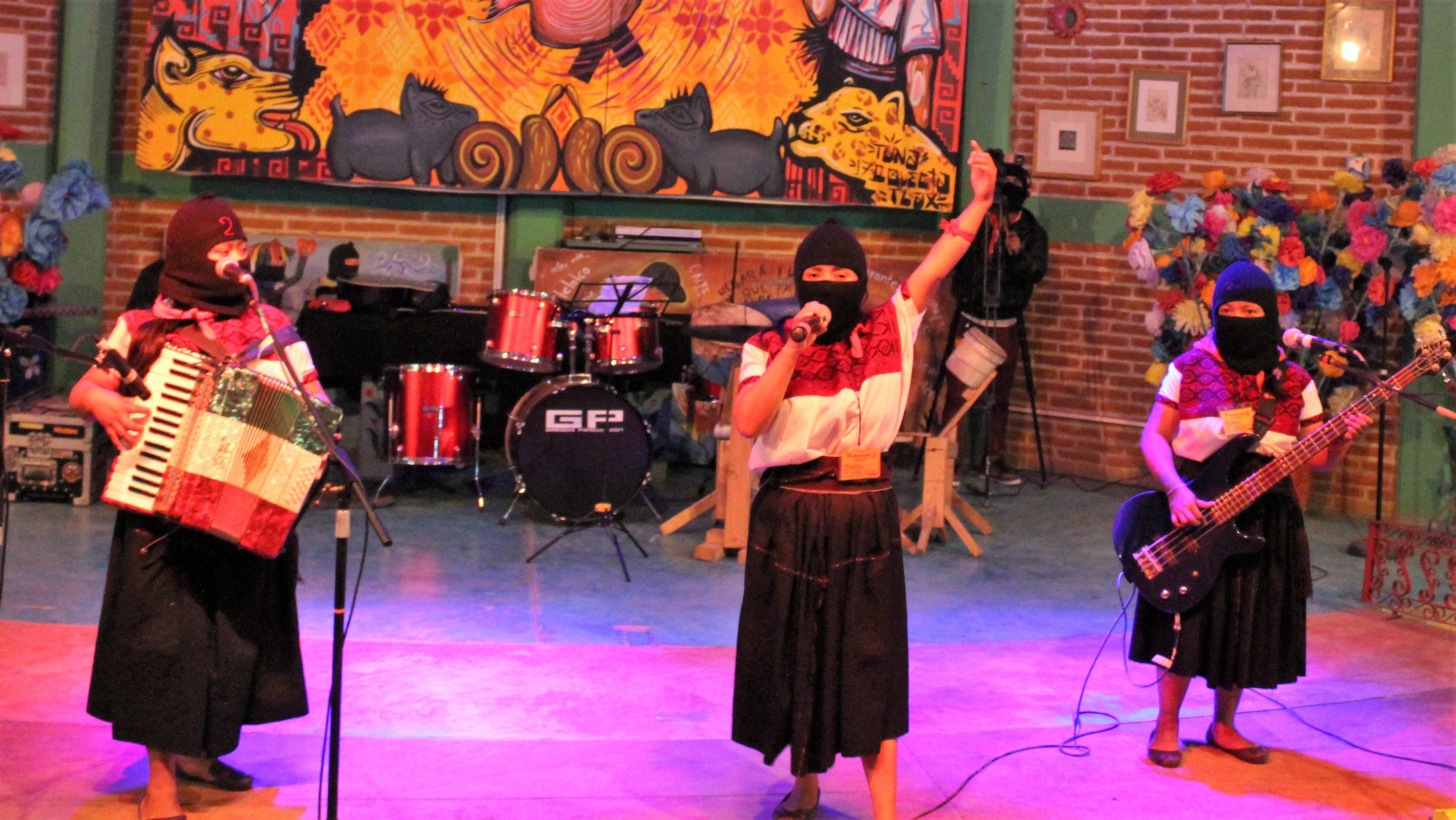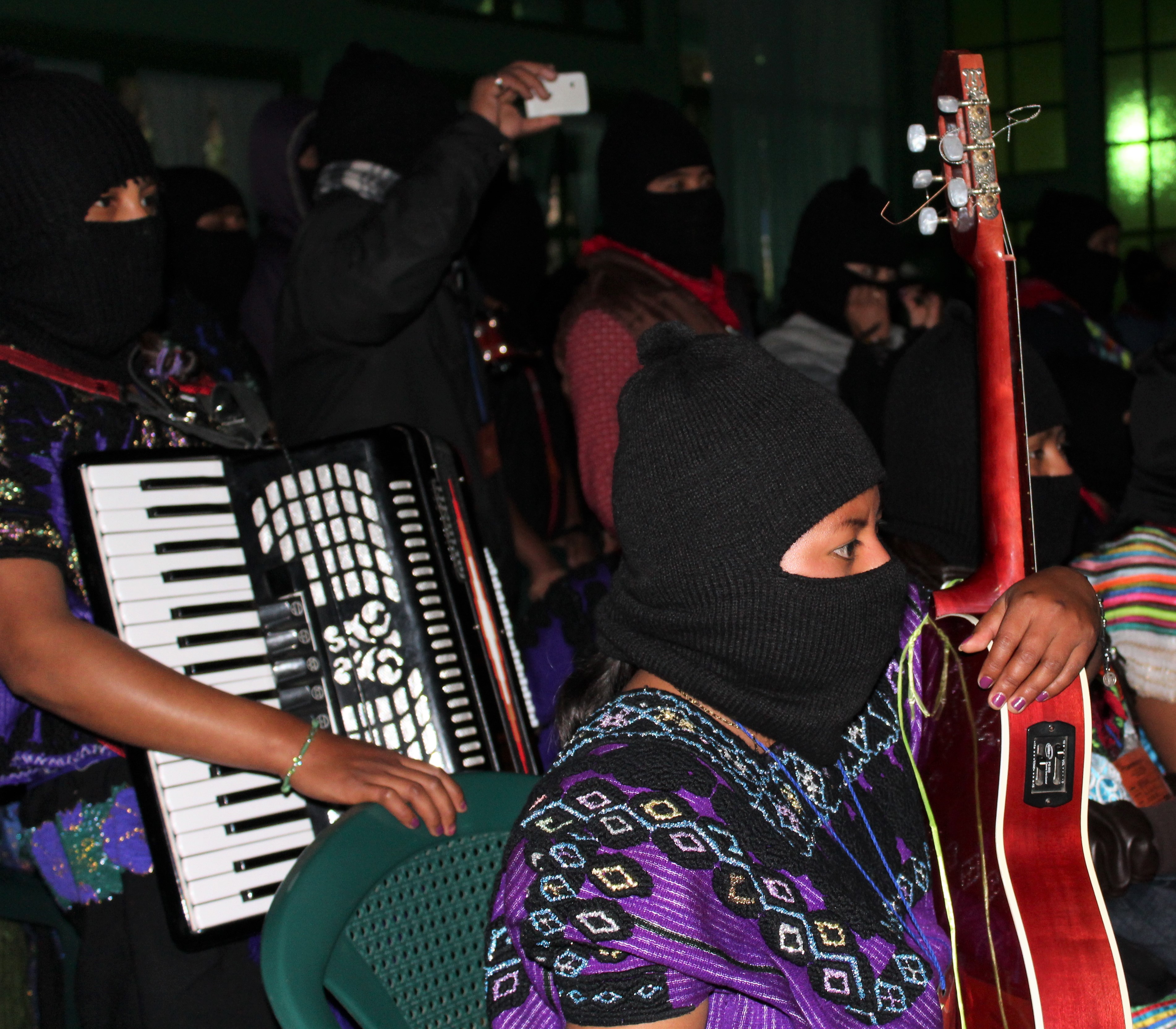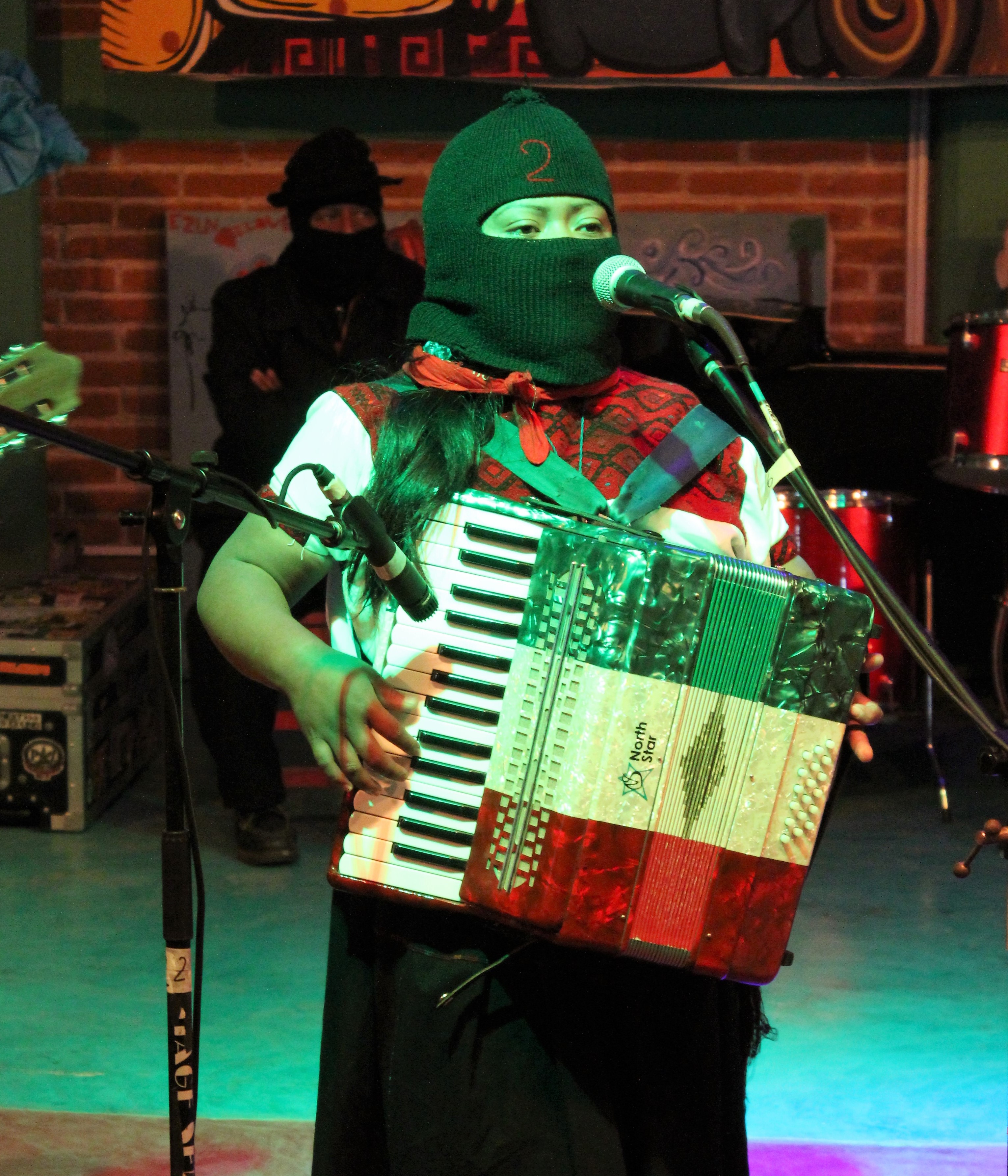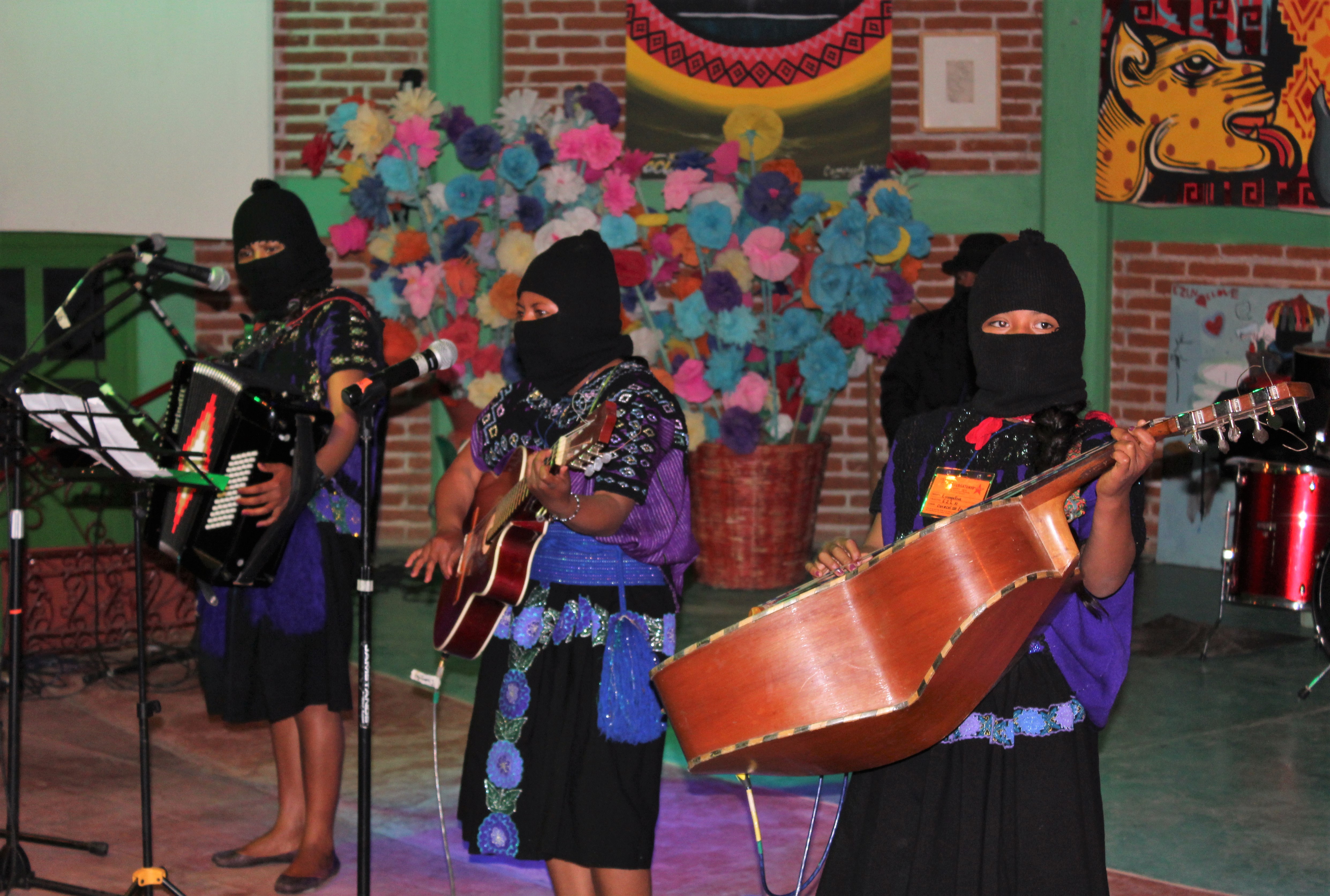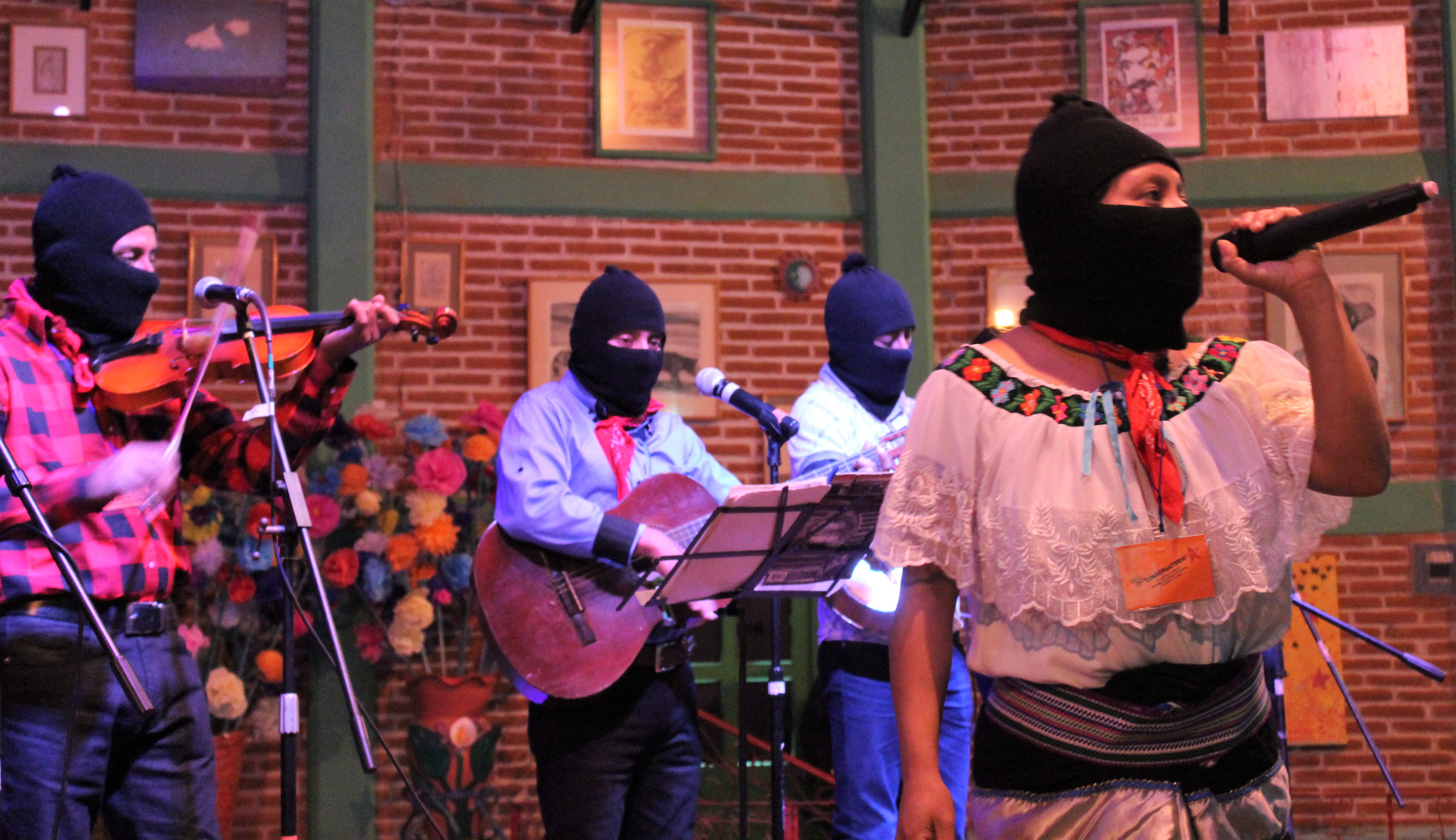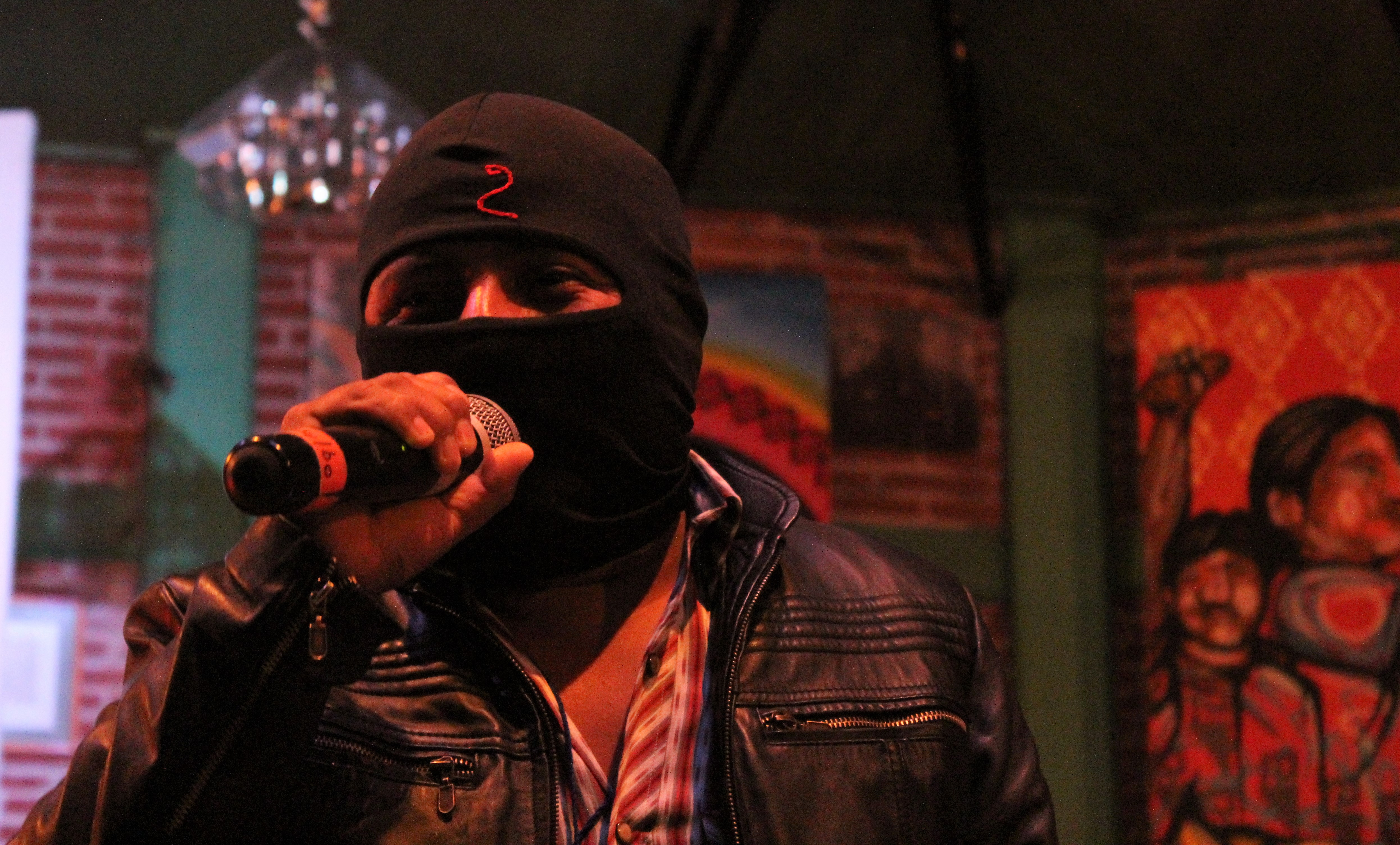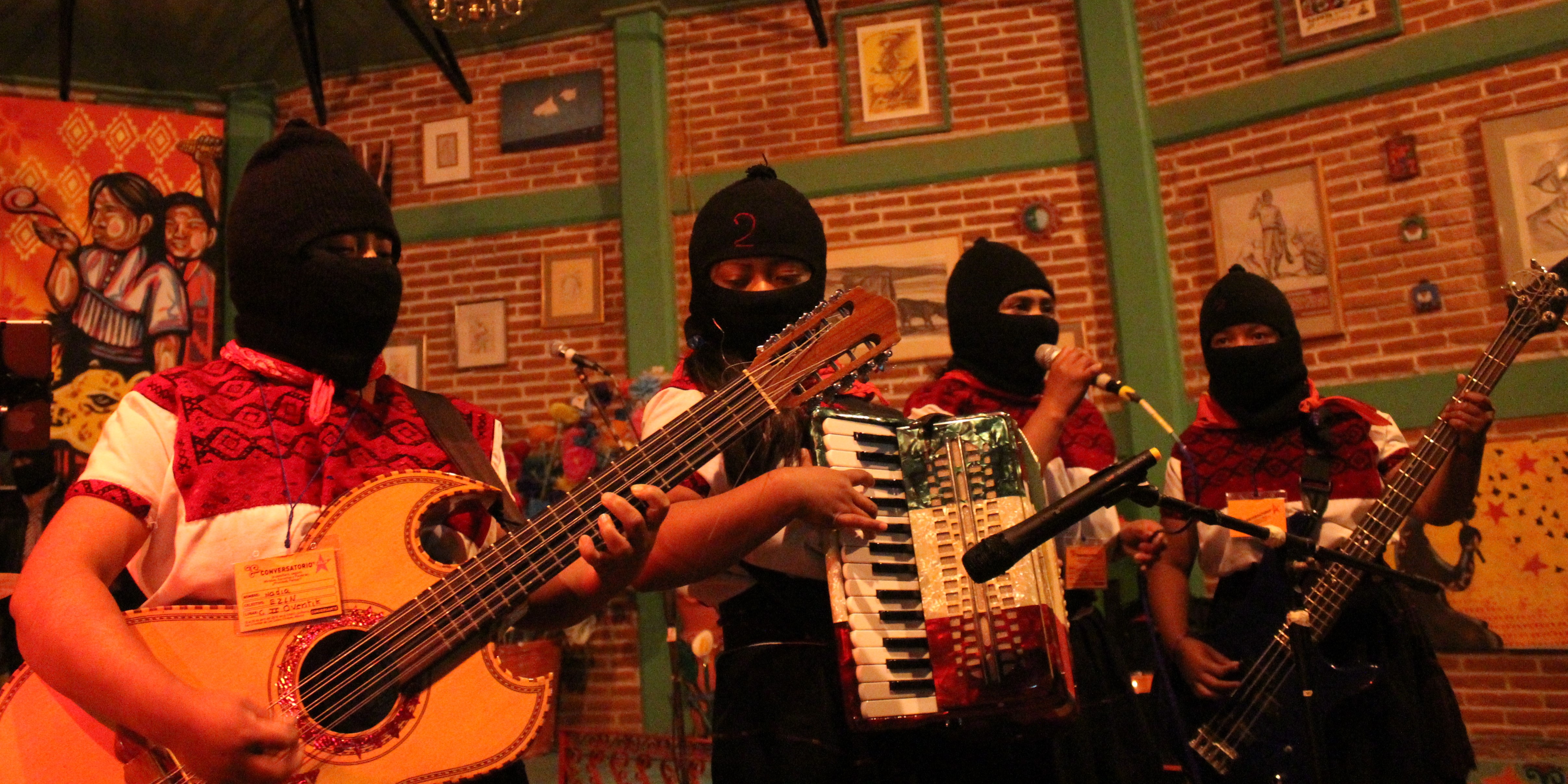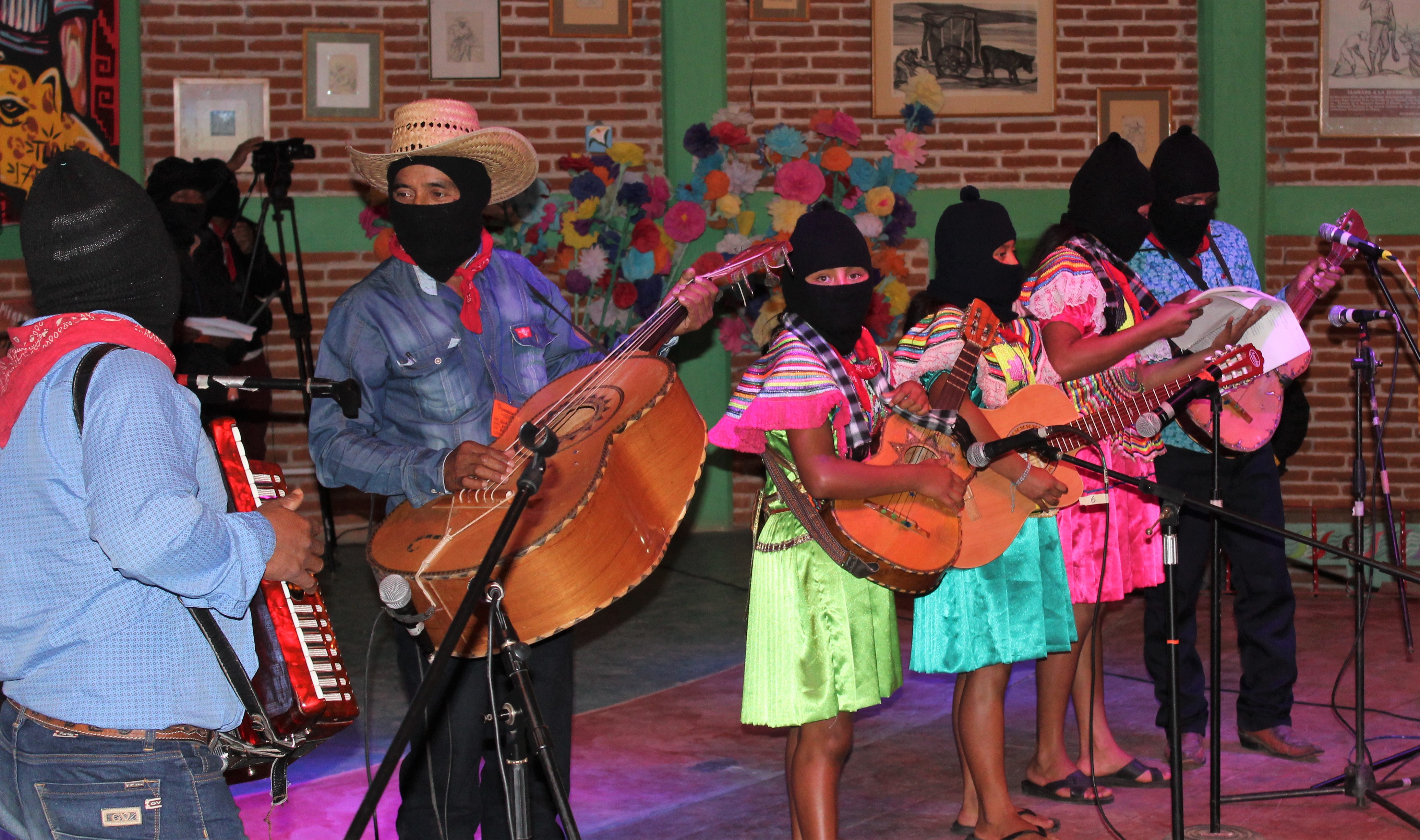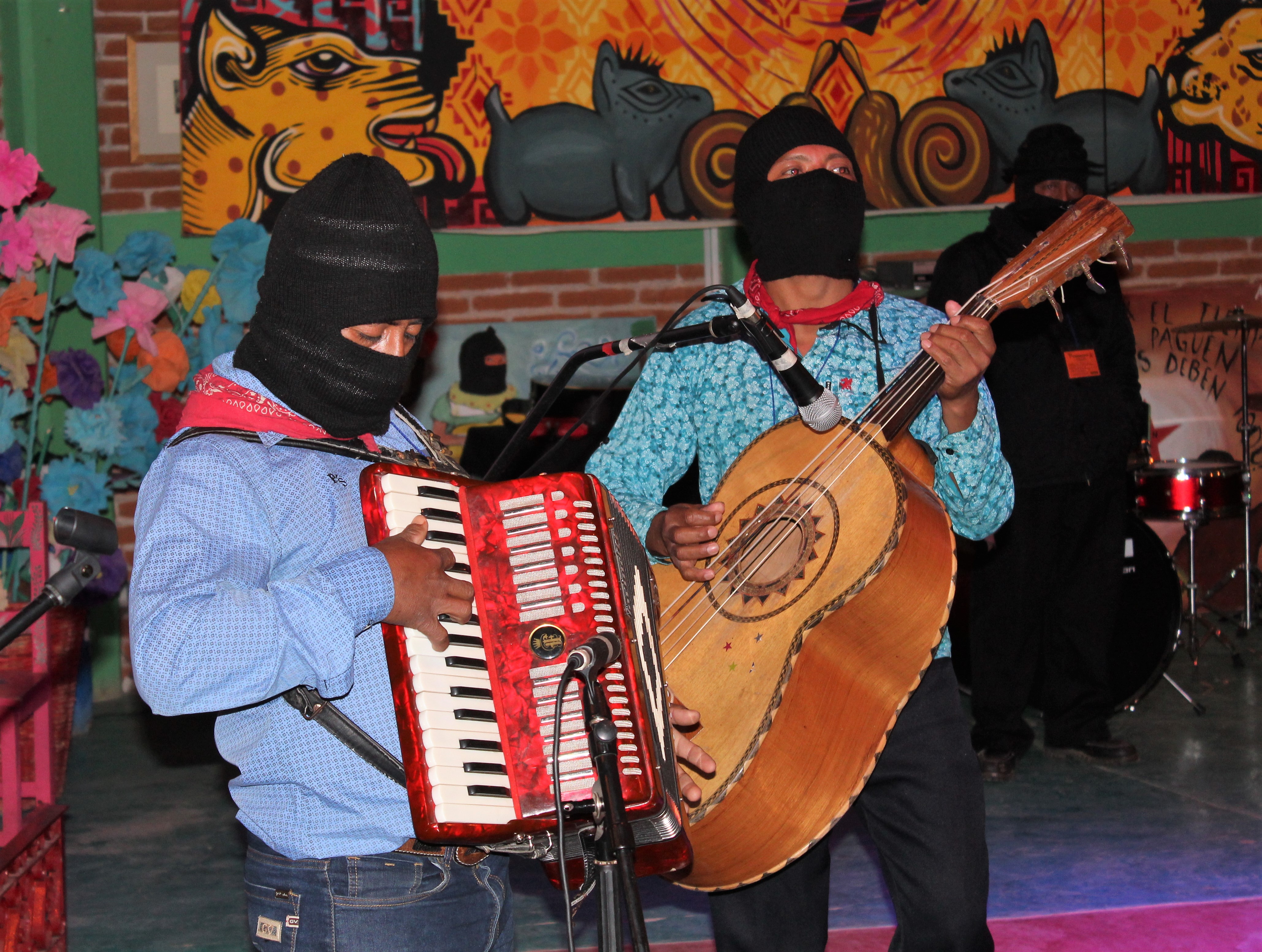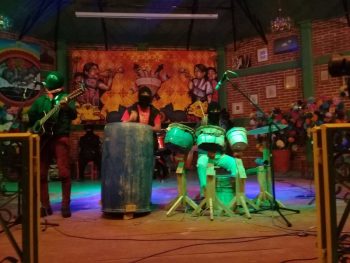
Chiapas
(Español) Exposición “Imágenes de la esperanza: El arte del cartel en la campaña de Marichuy”
Durante el Conversatorio “Miradas, escuchas, palabras: ¿prohibido pensar?” (15 a 25 de abril de 2018), se exhibe, en el Cideci/Universidad de la Tierra Chiapas, la exposición “Imágenes de esperanza: El arte del cartel en la campaña de Marichuy”, con curaduría de Alejandro Magallanes. Compartimos aquí las imágenes de la exposición.
(Español) ¿Revolución? ¿Reforma? ¿Lucha por la Vida? – Día 3, Conversatorio “Miradas, escuchas, palabras: ¿prohibido pensar?”
CIDECI-UniTierra, San Cristóbal de Las Casas, 17/Abril/18.- Hace unas semanas, en pleno Encuentro Internacional de las Mujeres que Luchan, las compañeras zapatistas de la época clandestina explicaban a las jóvenes zapatistas que su legado consistía en heredarles la posibilidad de vivir luchando. Esta tarde, los zapatistas volvieron a enfatizar que, más allá de los enredos entre el supuesto dilema “firmas u organización” y la gigantesca discusión del siglo pasado sobre “Reforma o Revolución”, la “categoría” contemporánea, la mera realidad y la mera urgencia de hoy es, literalmente, la lucha por la vida.
En el inicio del Conversatorio, al seguir abordando lo que lxs zapatistas llaman el “Efecto Marichuy” en el Encuentro de marzo en el caracol de Morelia, el Sup Galeano evocó que las compañeras zapatistas esperaban conocer a las mujeres de afuera porque, como en las ciudades las atacaban más, seguramente estarían mejor organizadas que ellas para poder estar vivas. Esta preocupación vital, que puede sonar a límite pero también puede ser potencia imaginativa y práctica, se trasladó al resto de la jornada cuando el EZLN, en voz del Sup Galeano, explicó que según su mirada el Capitalismo ha decidido no permitir más respiros (gobiernos progresistas) e intentará conquistar todo y destruirnos a todxs. Es por ello que la apuesta no es “Reforma ni Revolución, sino Supervivencia, es decir Resistencia y Rebeldía”. Allí él probable efecto Marichuy: las ganas de trabajar por la vida no sólo con la palabra, efecto que ojalá germine también no sólo dónde ya existe la tierra fértil de la organización autónoma.
Alicia Castellanos, Carlos Aguirre Rojas, Gilberto López y Rivas y Alejandro Grimson se sumaron a la marea de reflexión, teoría, historia política y esfuerzos comunes en América Latina. Por ejemplo, Alejandro explicó que vale la pena celebrar si se cambian las torturas militares por elecciones o se aumentan los salarios, los hospitales y las escuelas, pero recalcó que la lucha central es, sobre todo, “incrementar cualitativamente las autonomías de nuestros actores, donde tengamos la ambición de erosionar esos poderes inmensos que parecen inconmovibles y que sólo pueden ser movidos con fuerzas políticas y sobre todo culturales que apunten a cambiar el mundo cada día”; y Alicia Castellanos resaltó que se está consolidando en México una identidad política de apoyo a los pueblos originarios capaz de trasladar e inscribir sus palabras y formas de vida a nuevos oídos, artes, espacios públicos, redes de apoyo, colectividades e irrupciones políticas.
Si, como evocó Gilberto López y Rivas, es en la participación de lxs de abajo de donde proviene la esperanza real de cambiar el mundo, la tormenta añade a la utopía de siempre una variante en sus reglas del juego: para poder disentir o elegir opciones es necesario mantenerse primero con vida. A golpes de realidad, esta variante cada vez está haciendo más explícitos los cambios y las dificultades de imaginar, organizarse y hacer política en esos abajos señalados por Gilberto, quién además concluyó que, pese a todo, toca “darle duro, sin confusiones ni derrotismo; y el que quiera criticar, primero que trabaje”.
Escucha/descarga las ponencias:
Conversación entre lxs ponentes:
